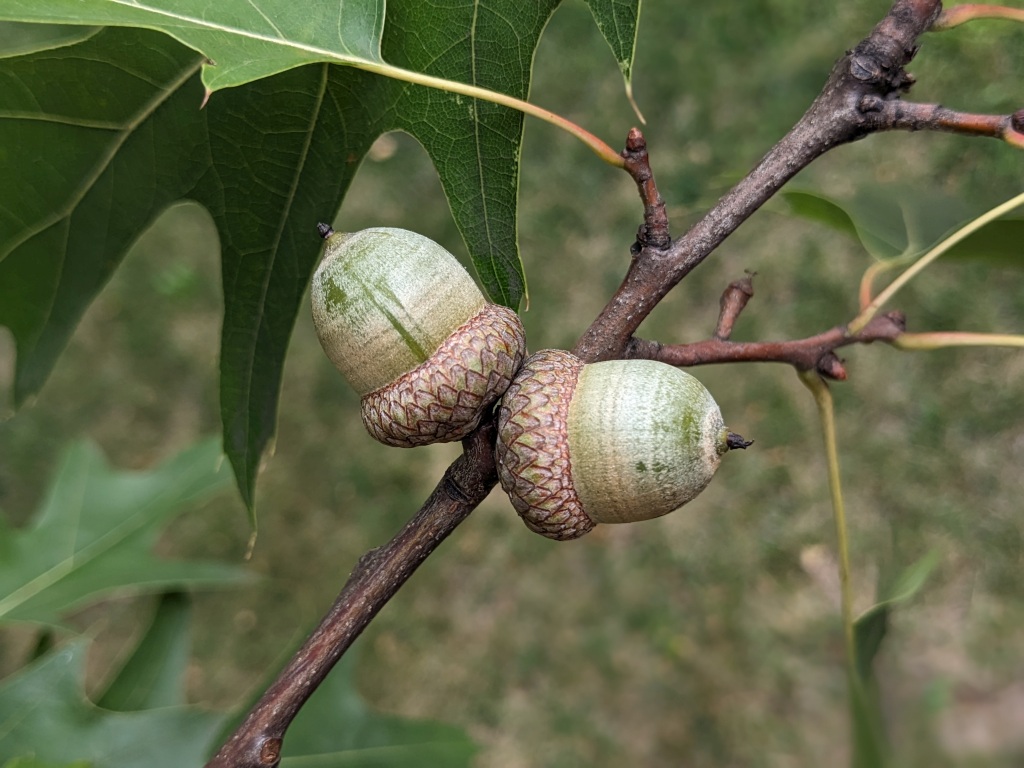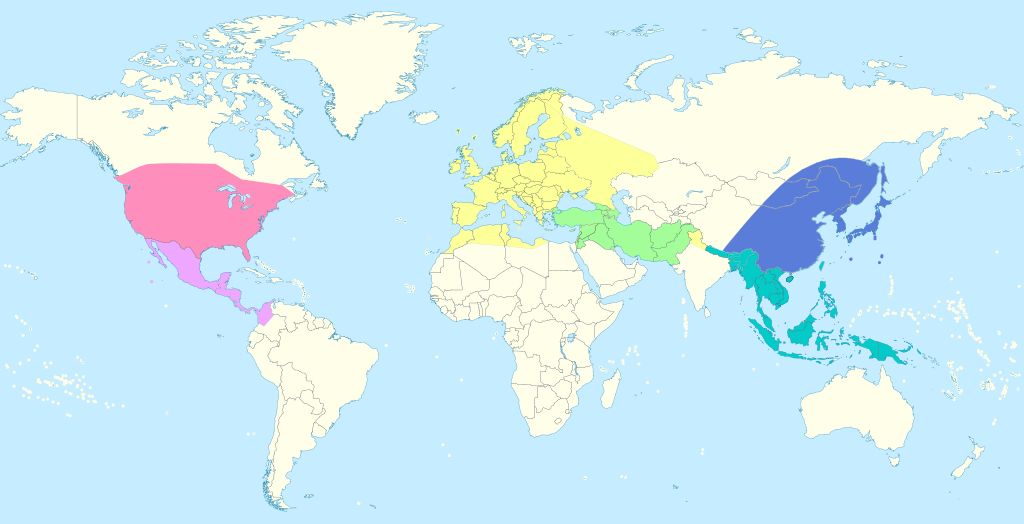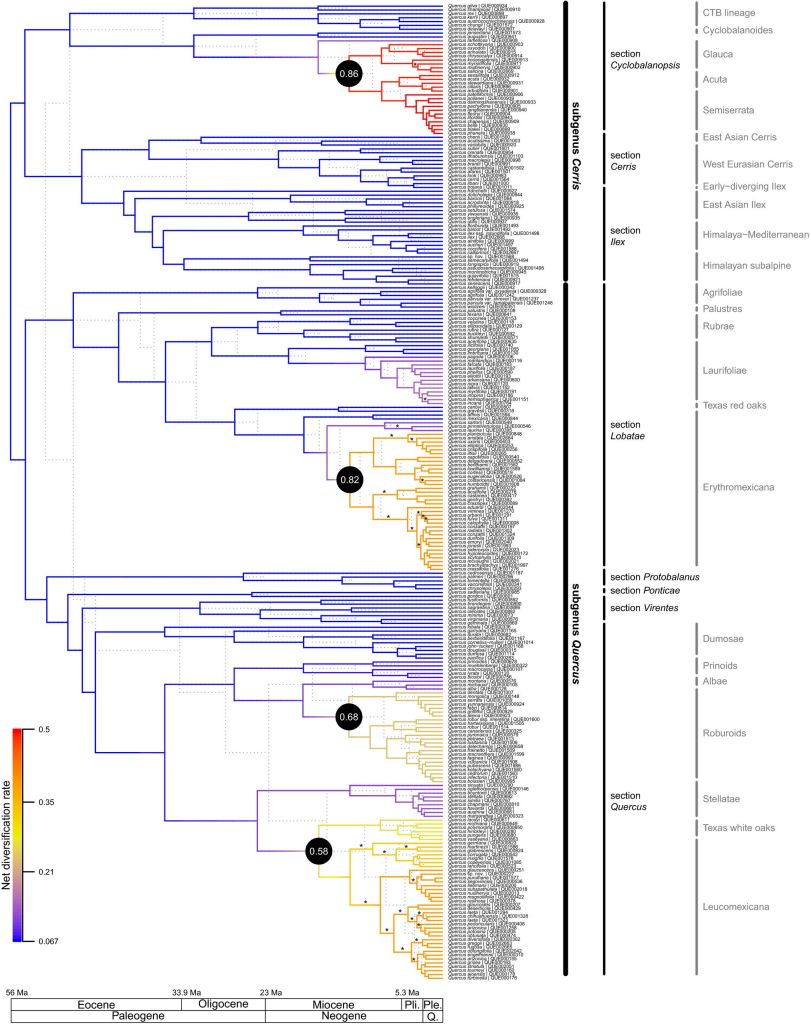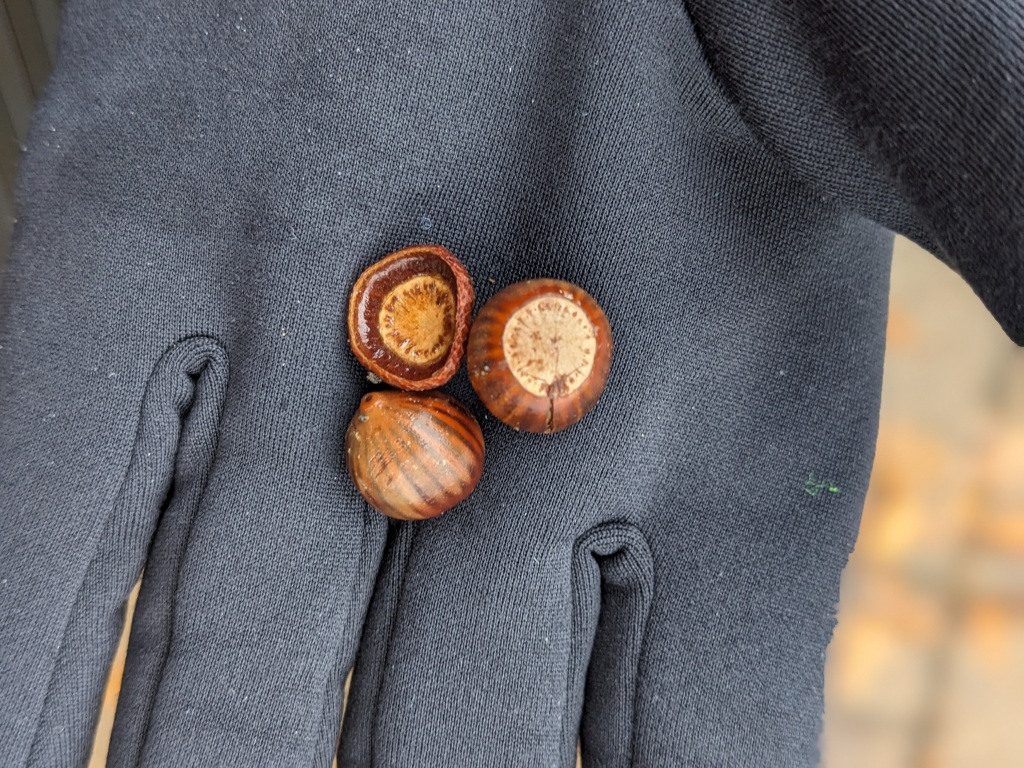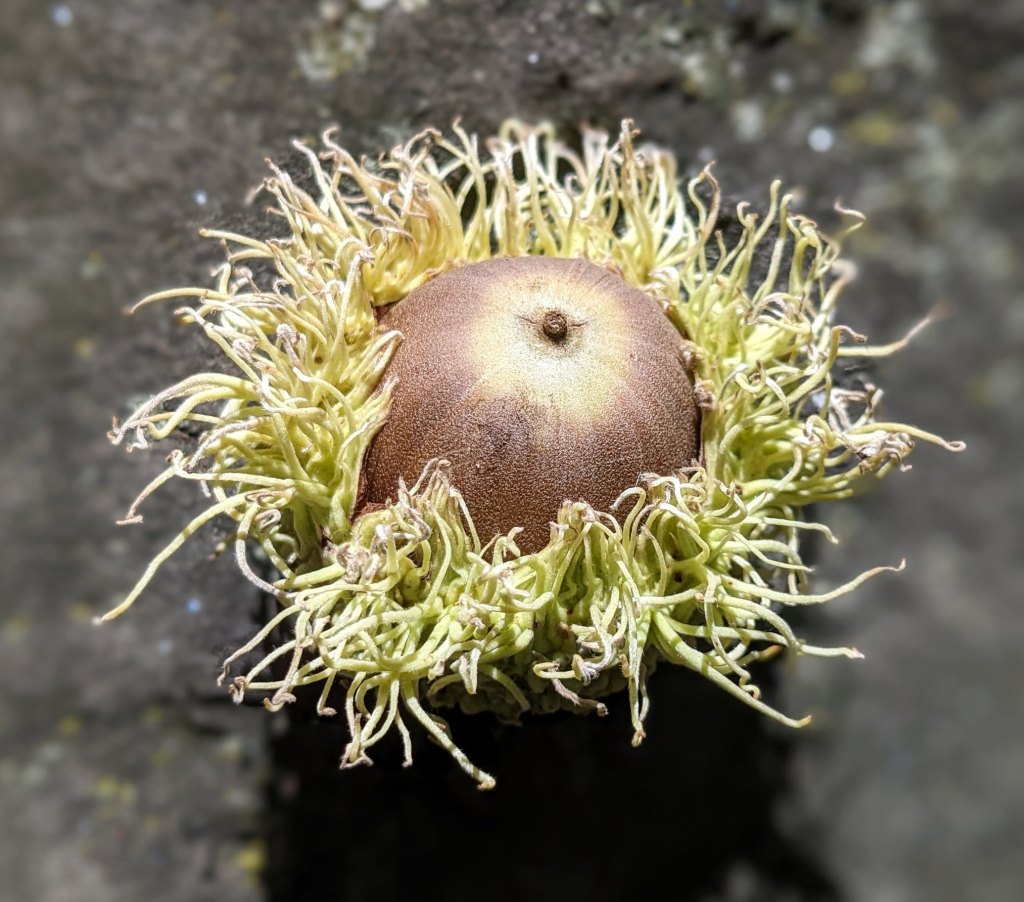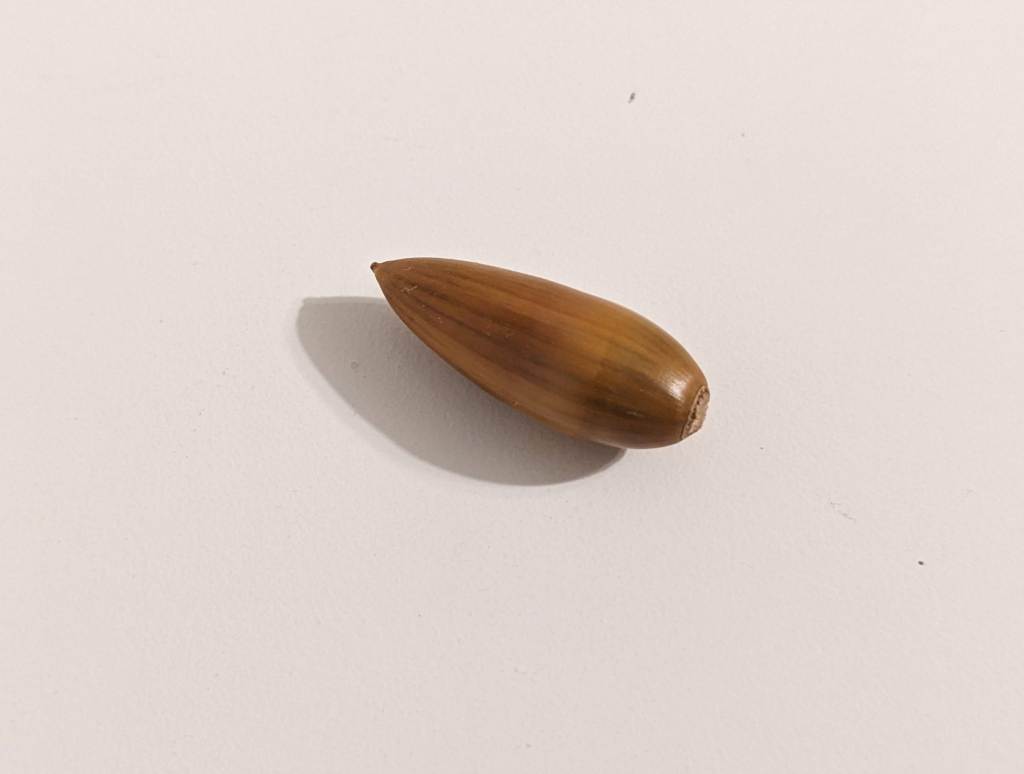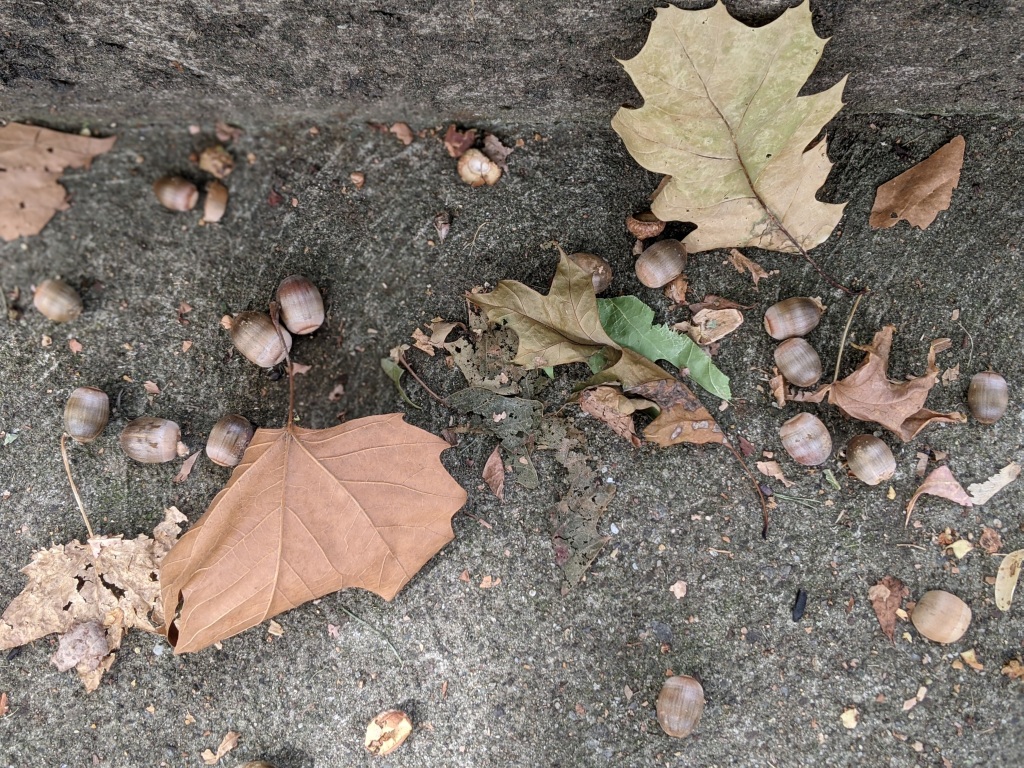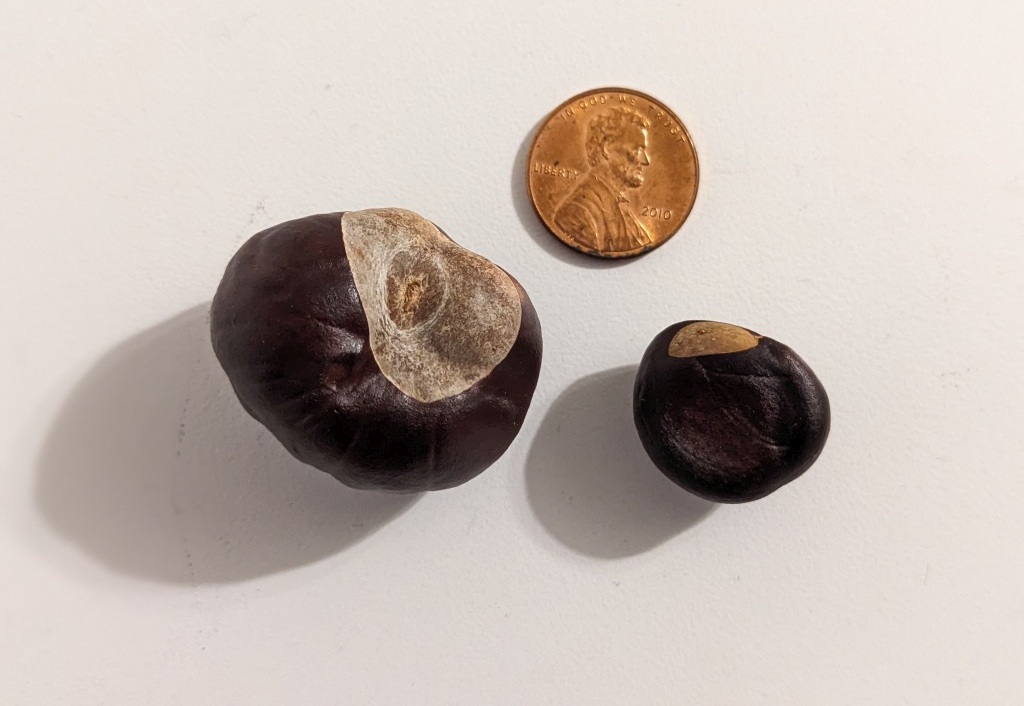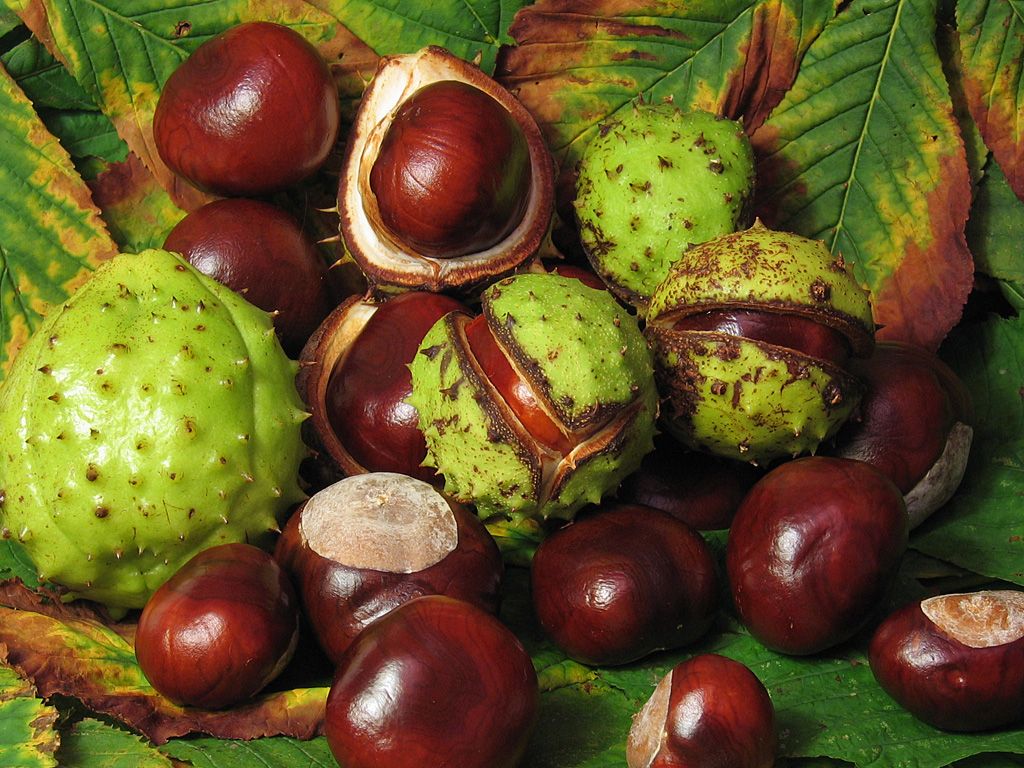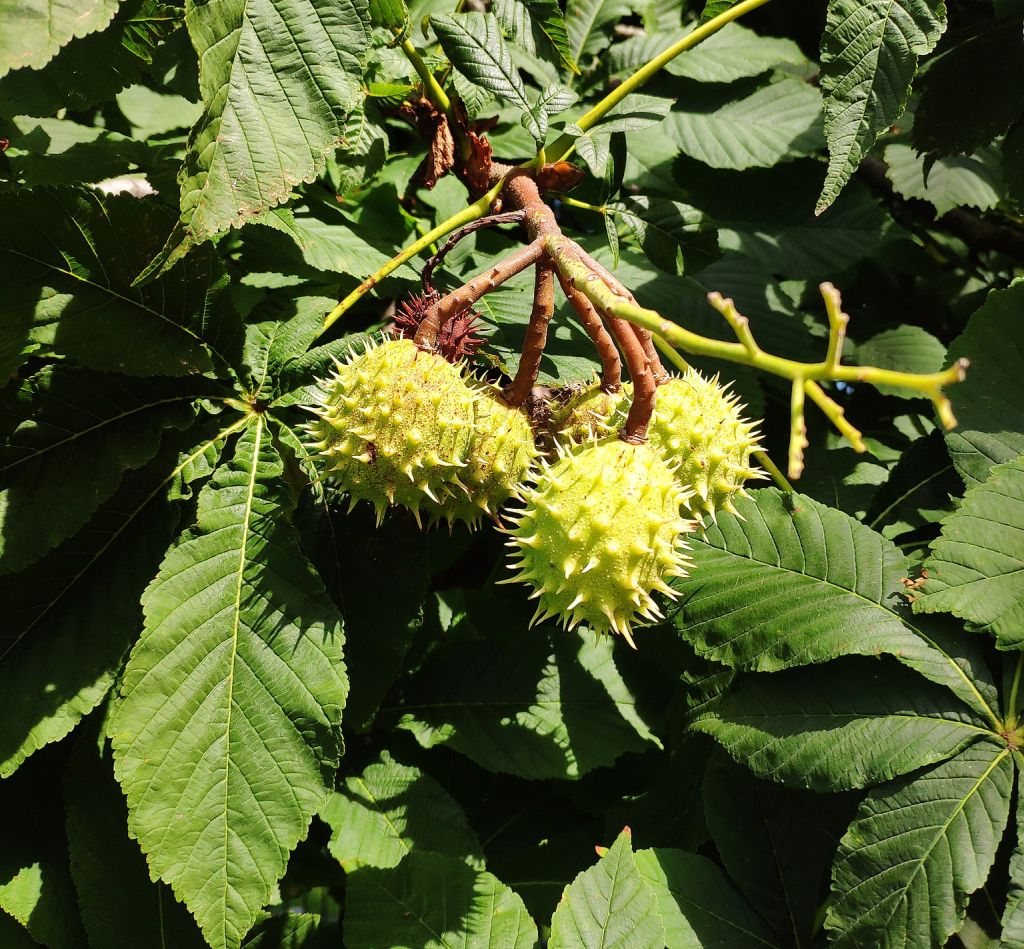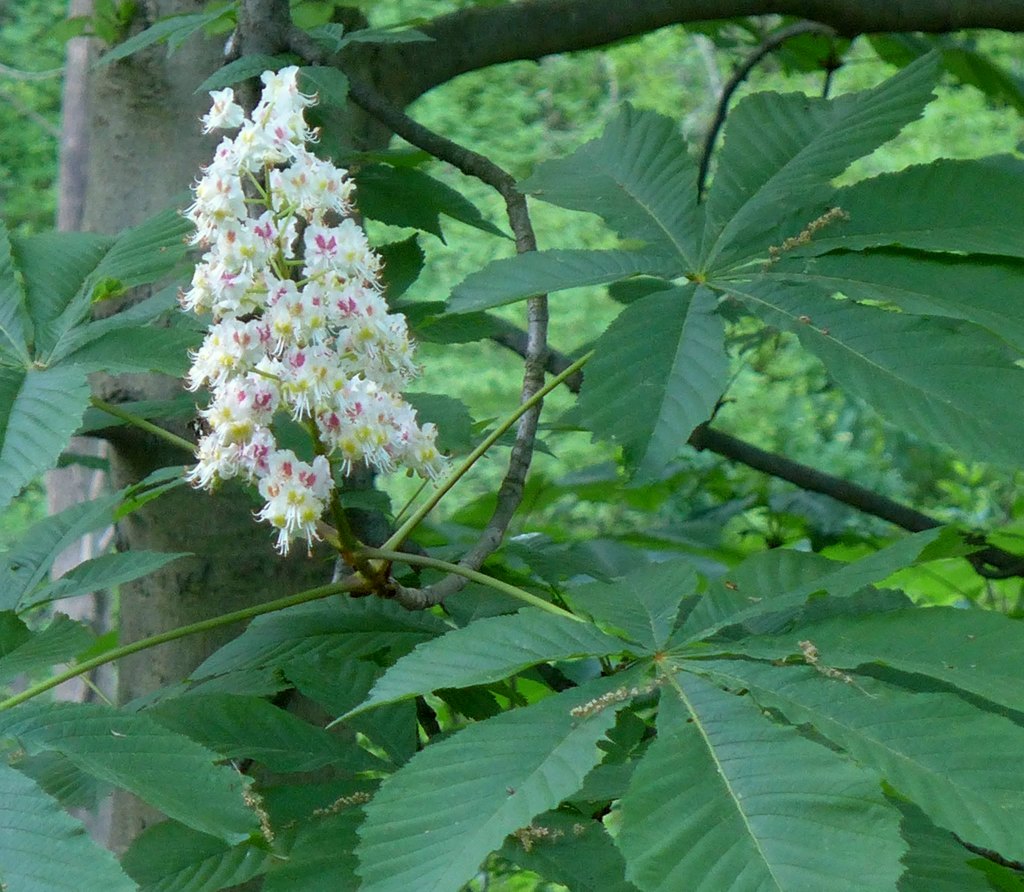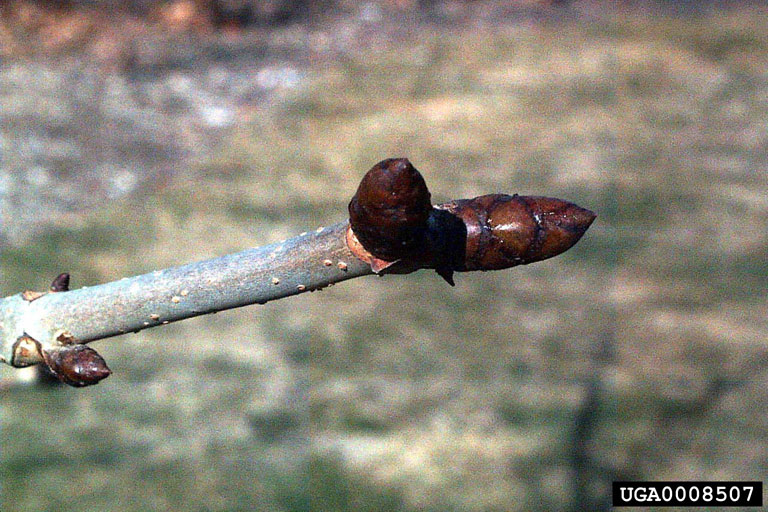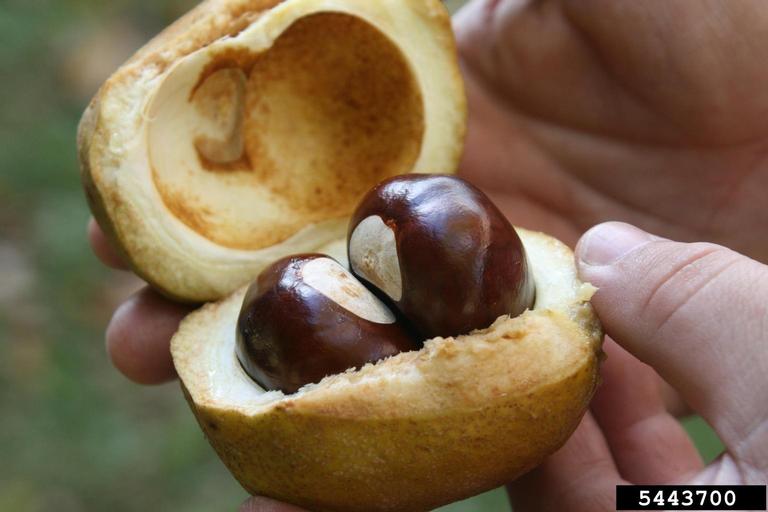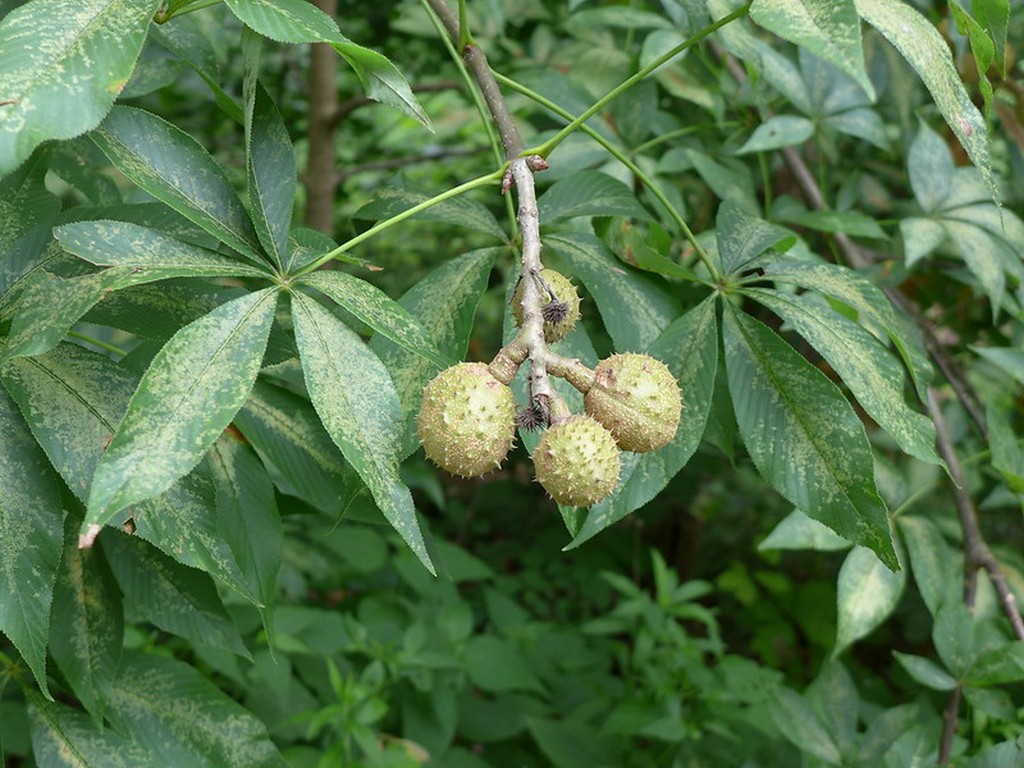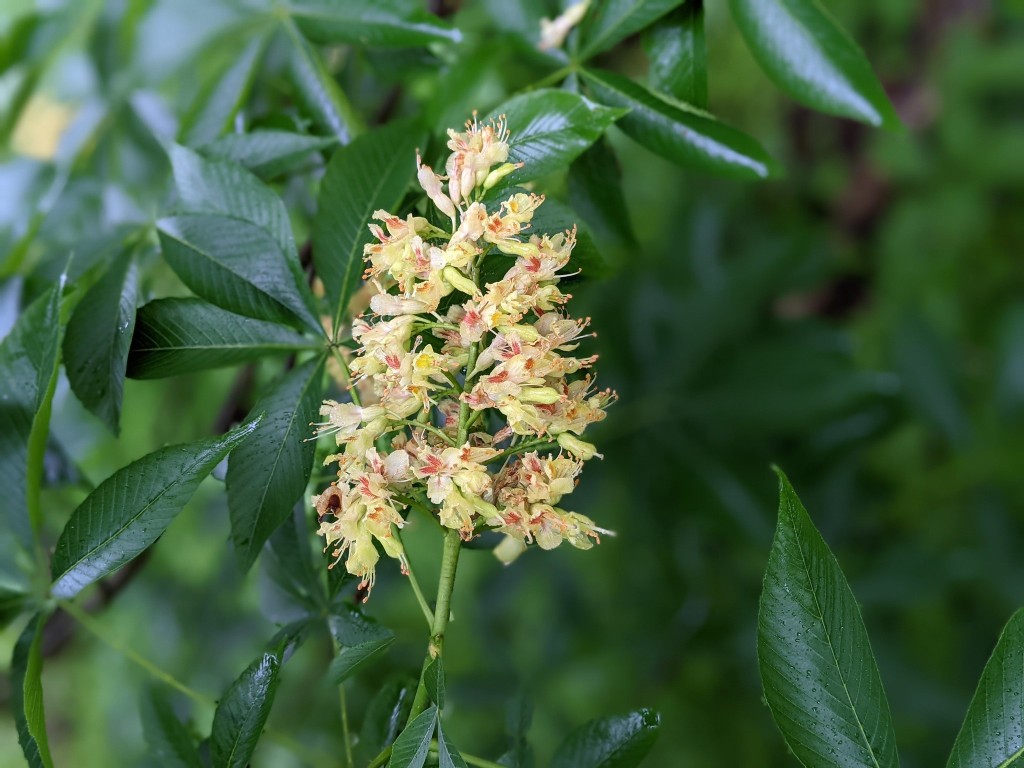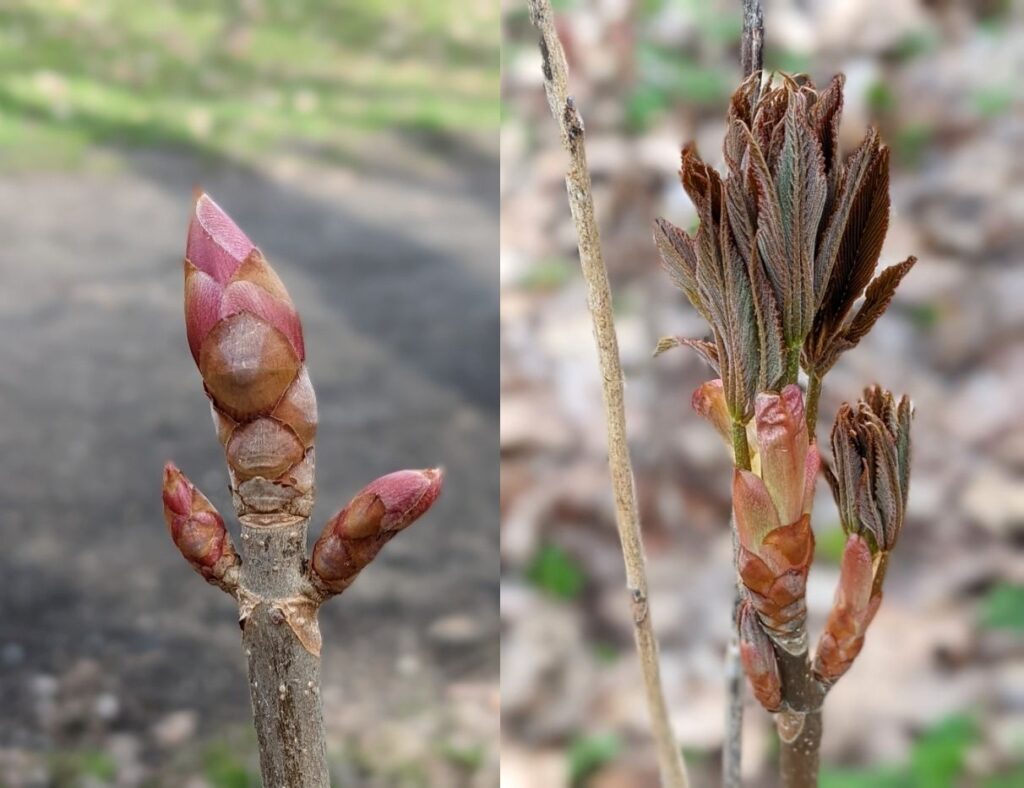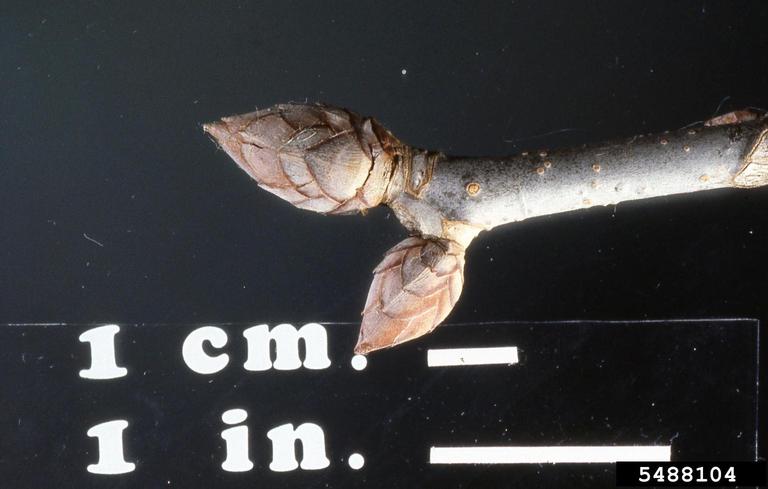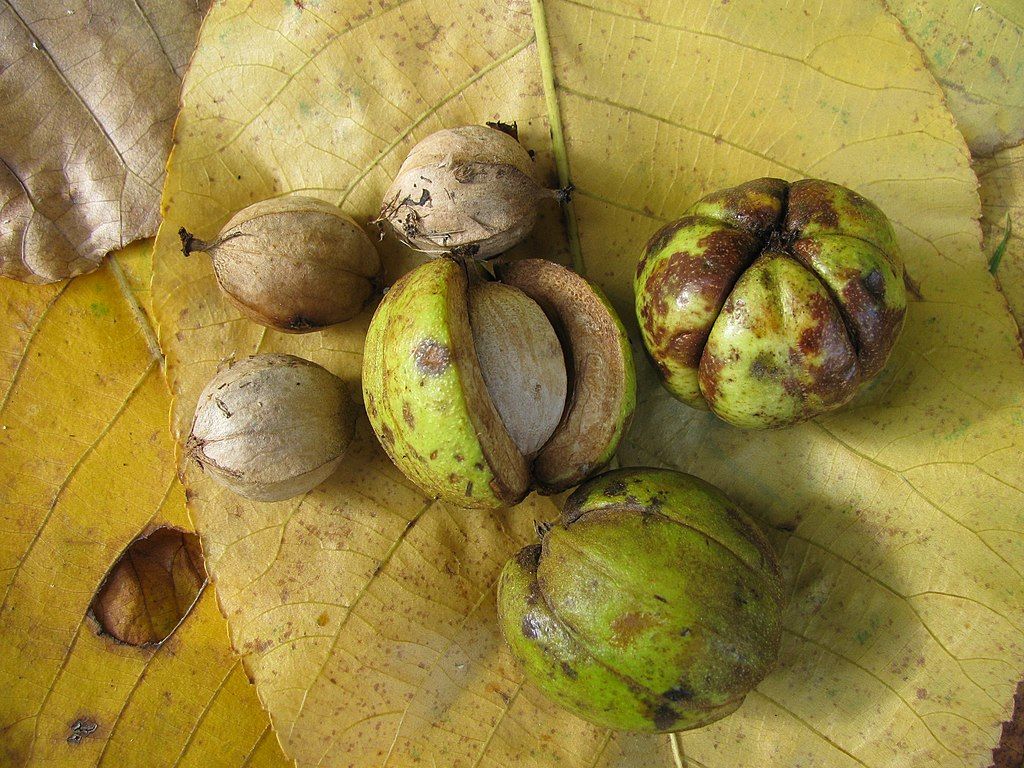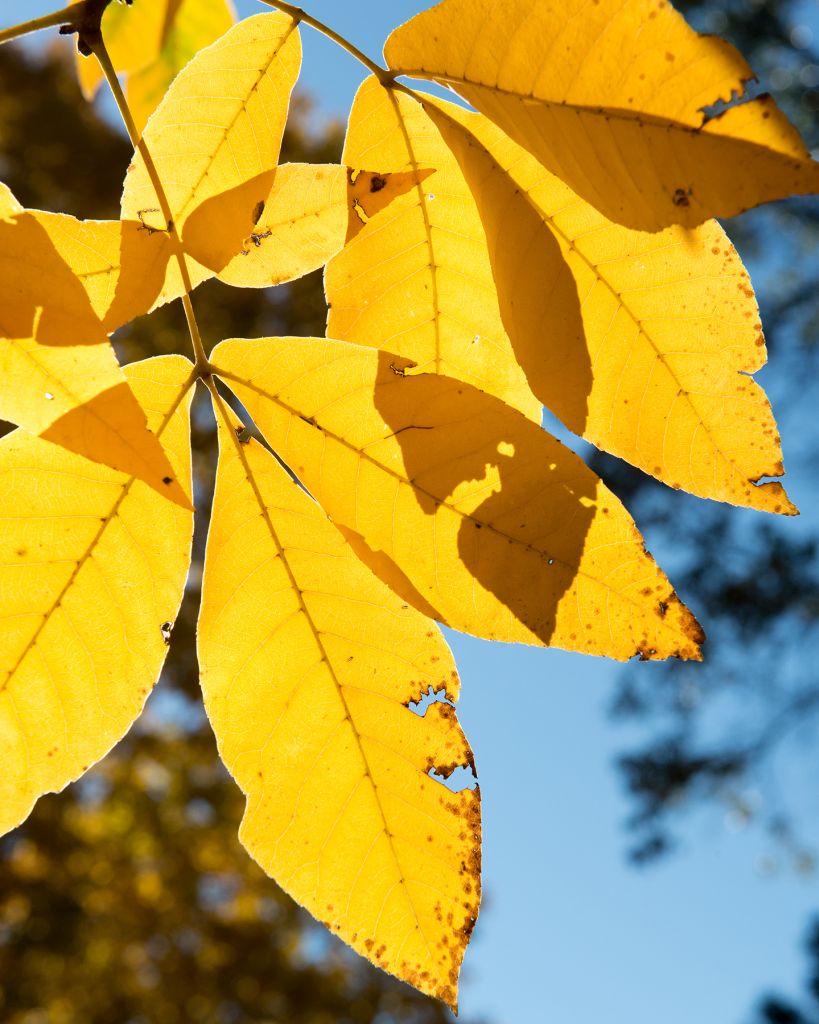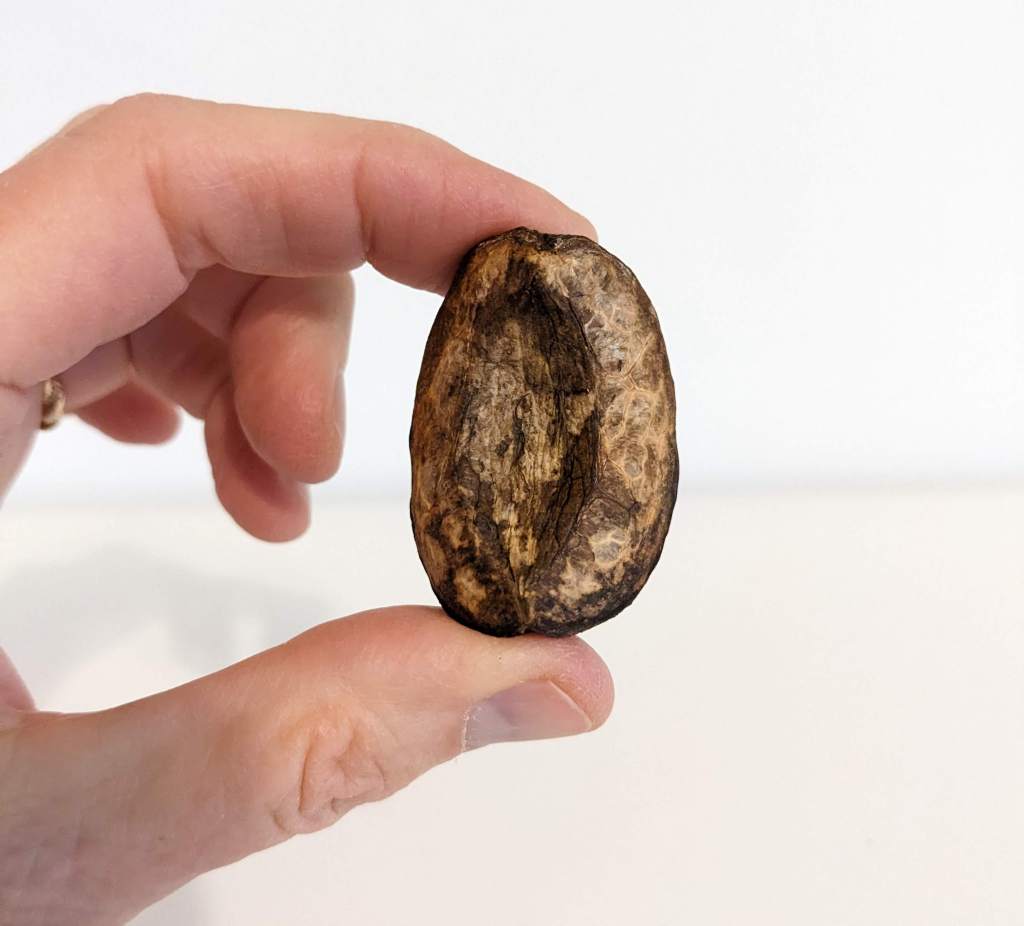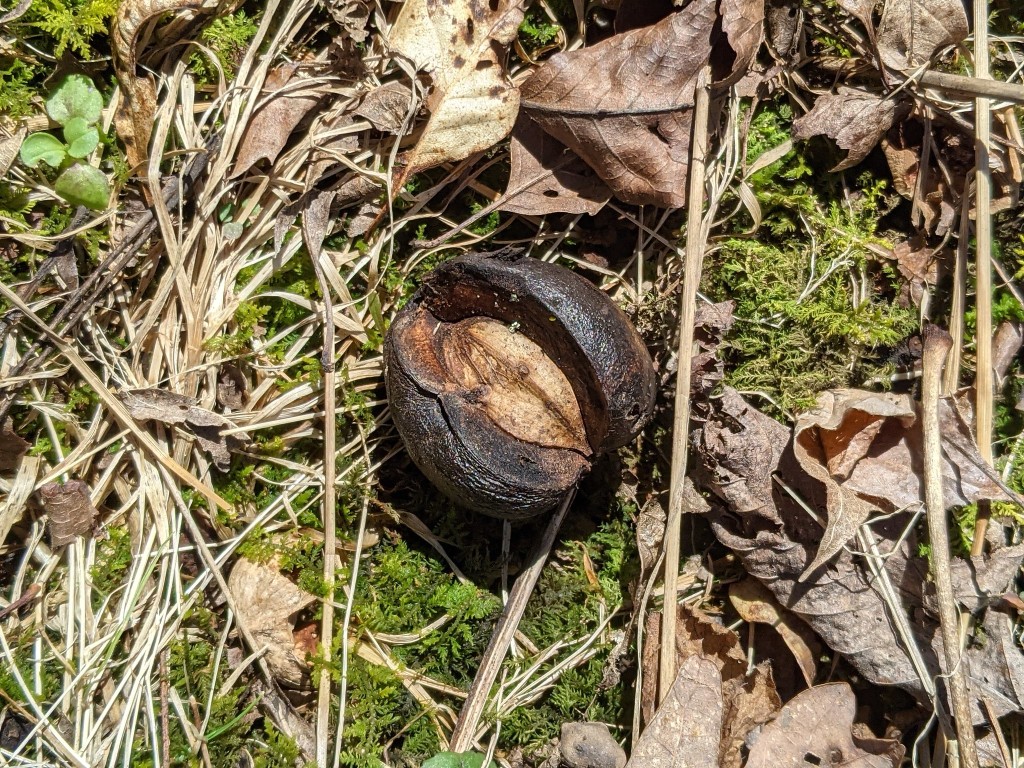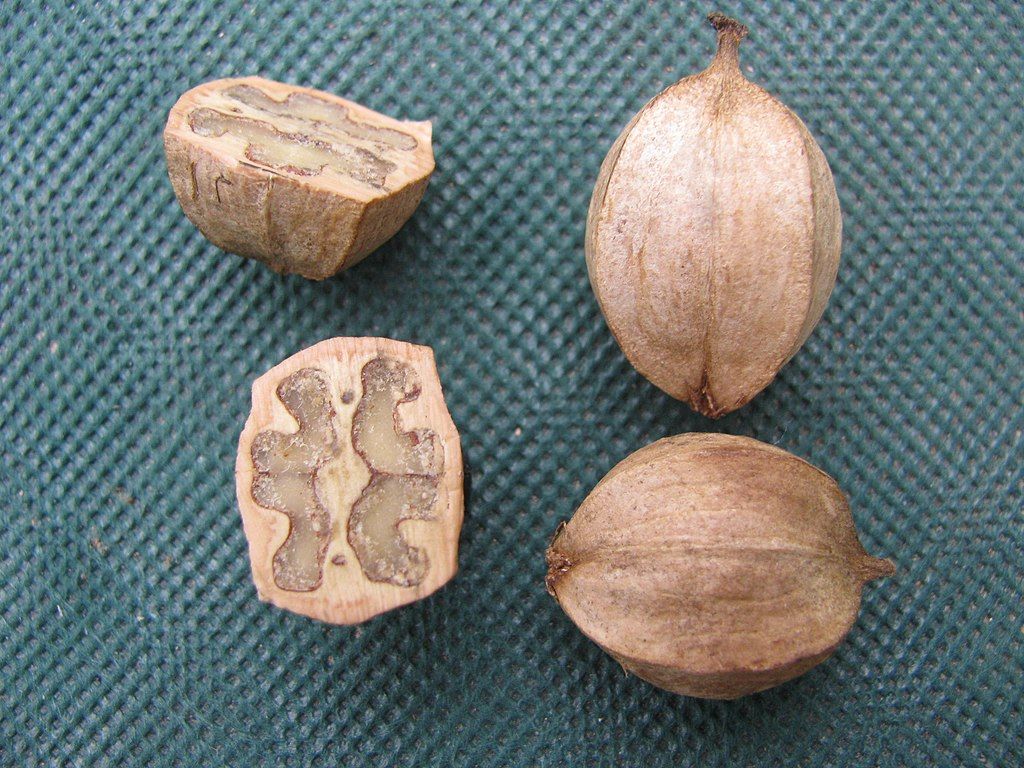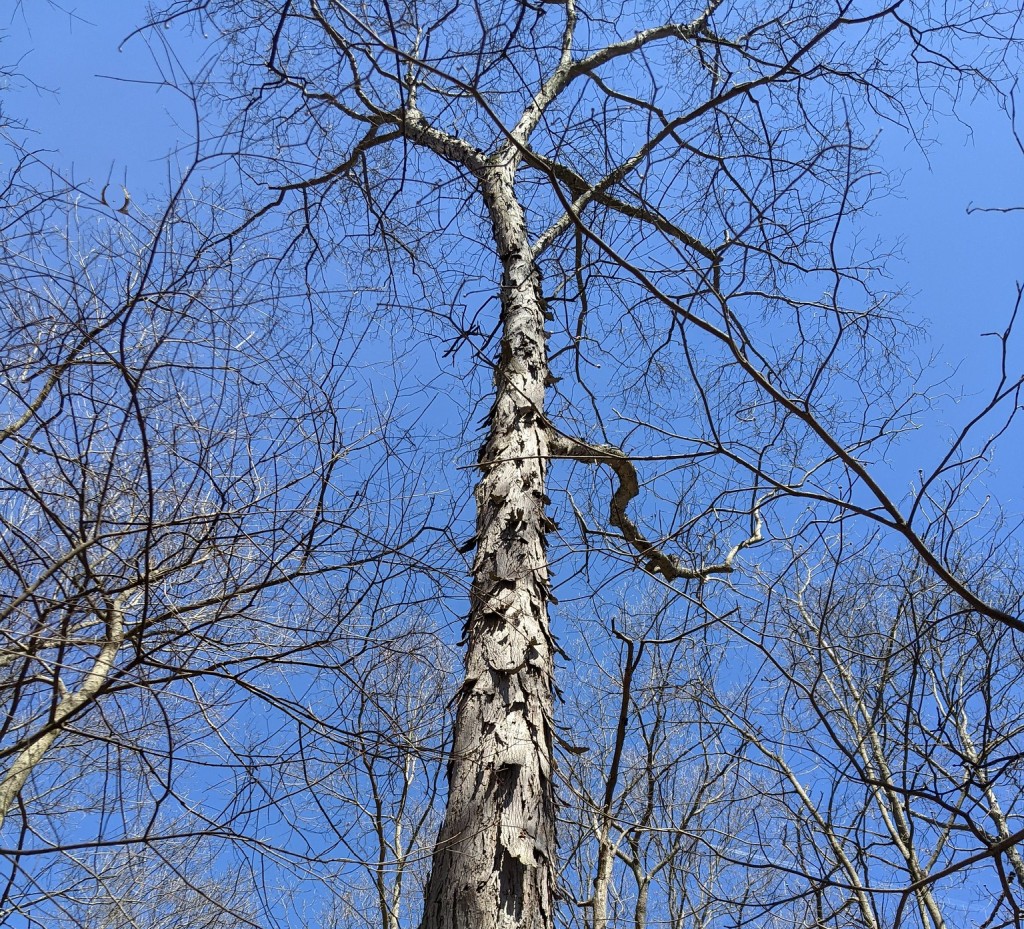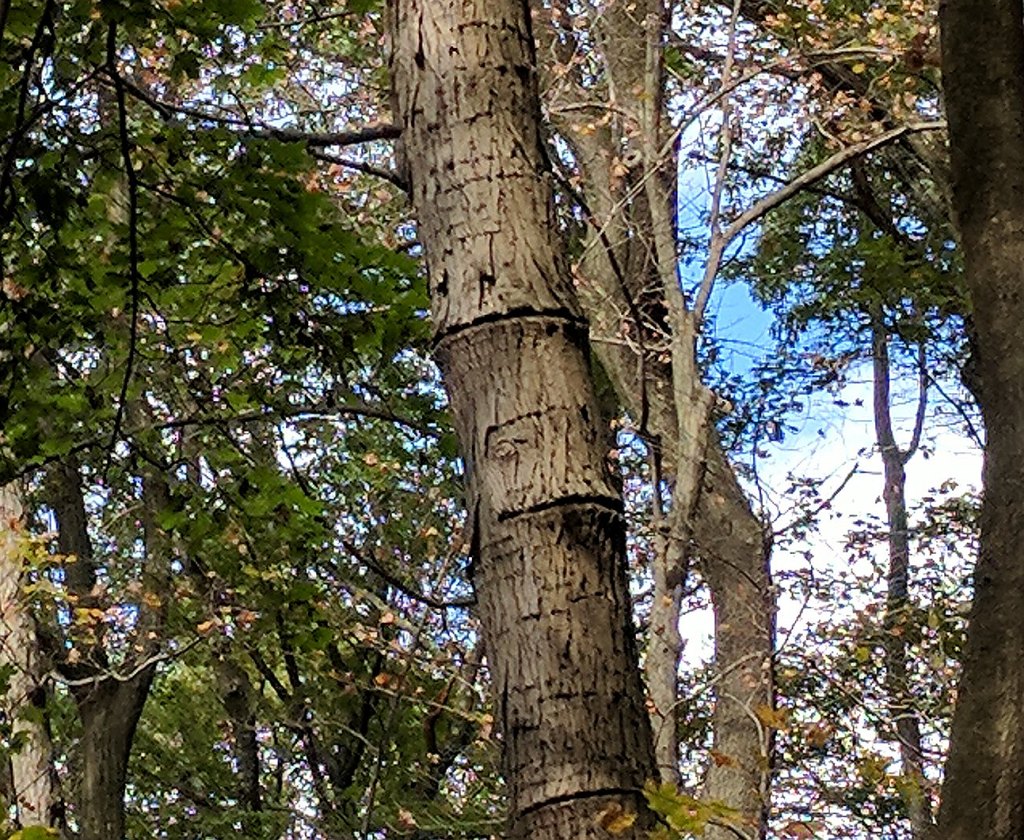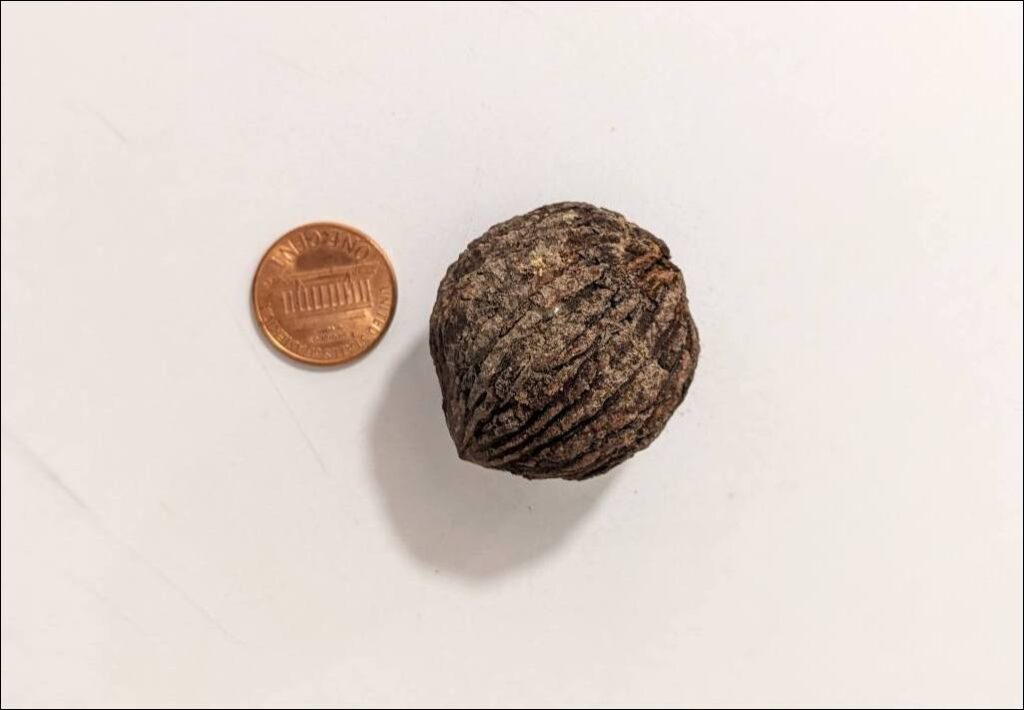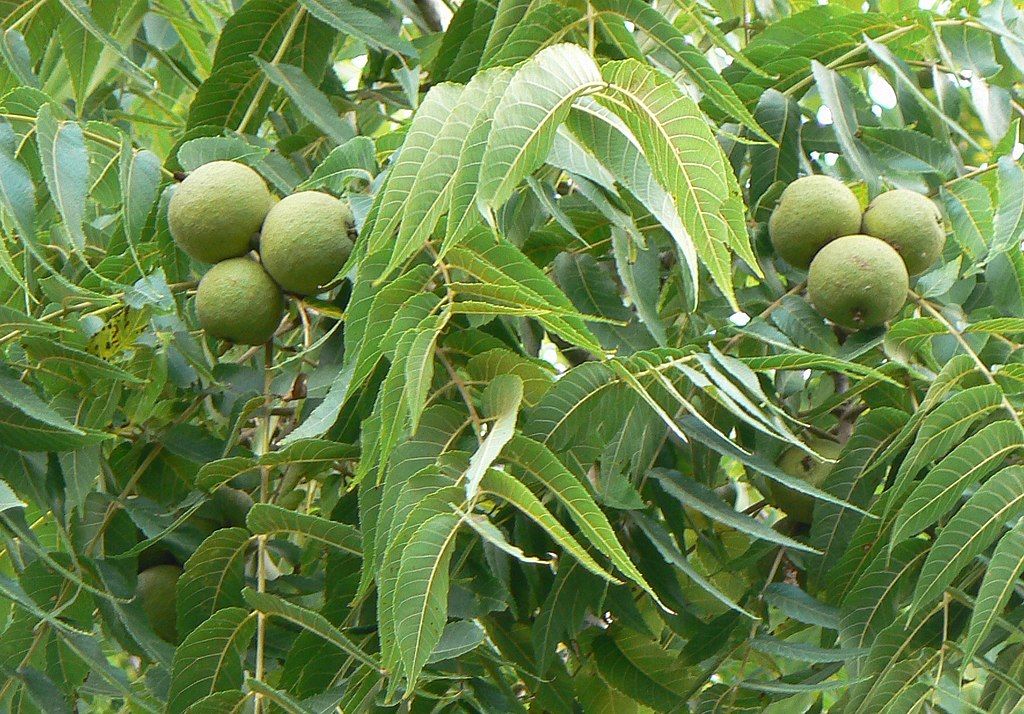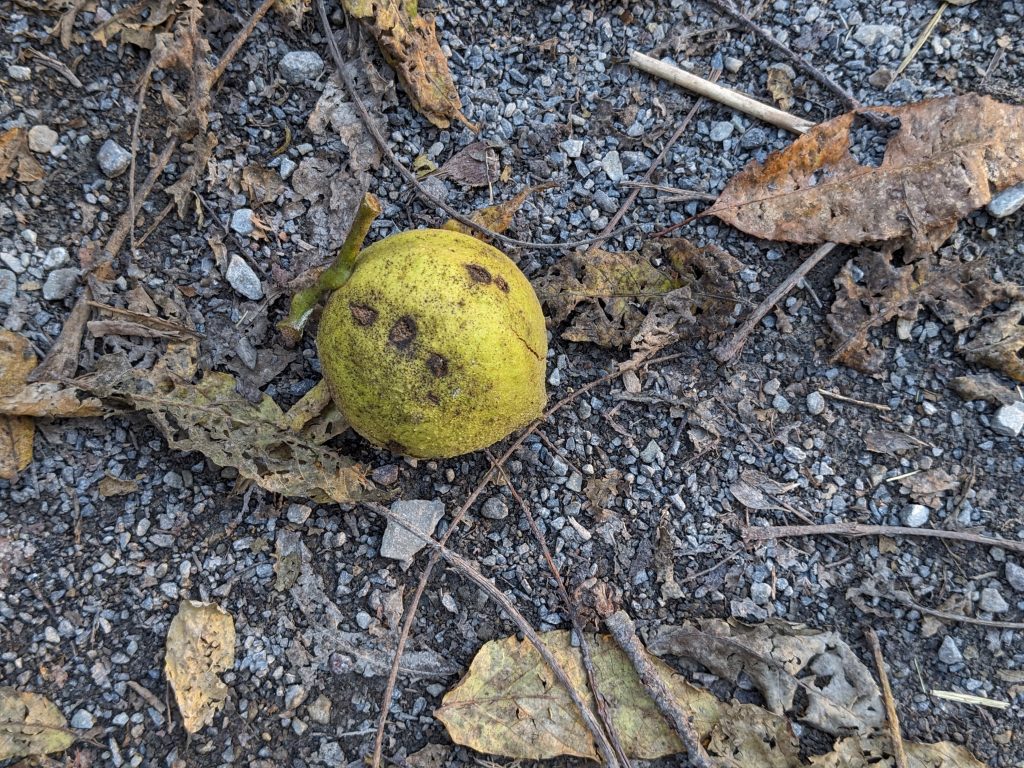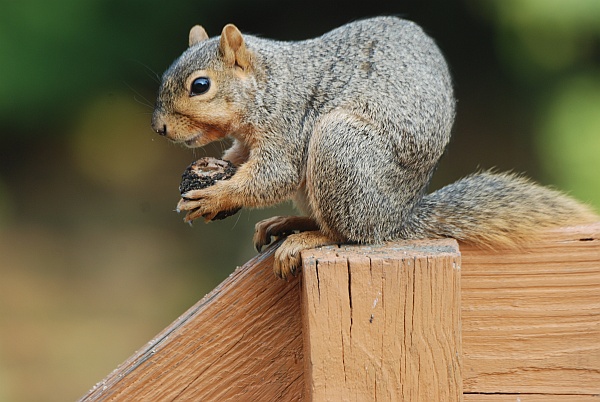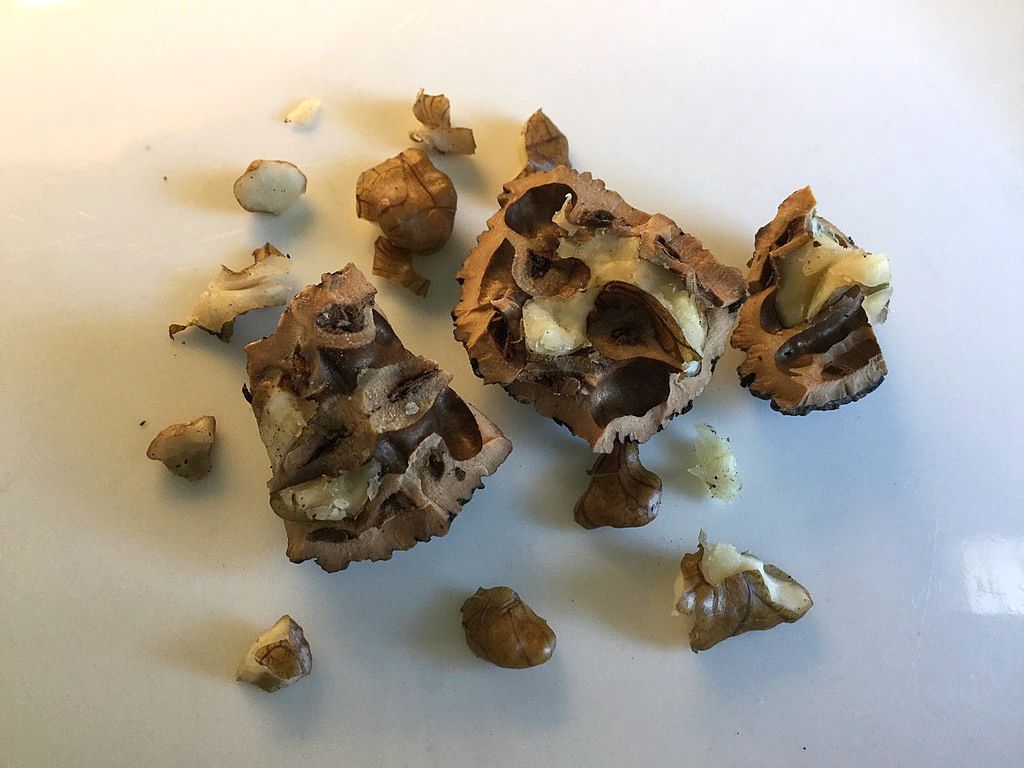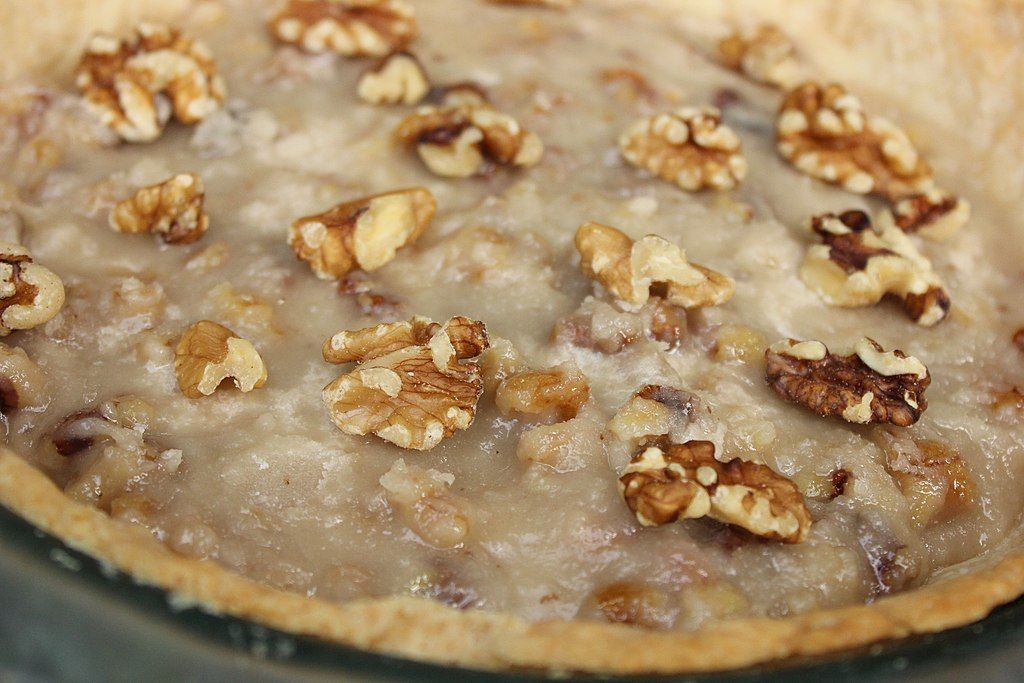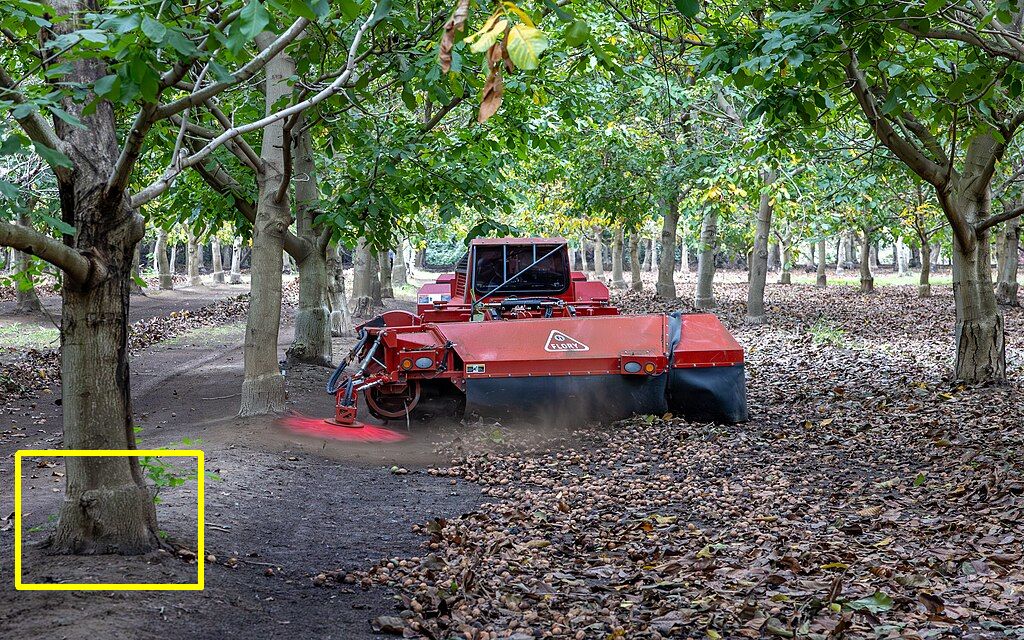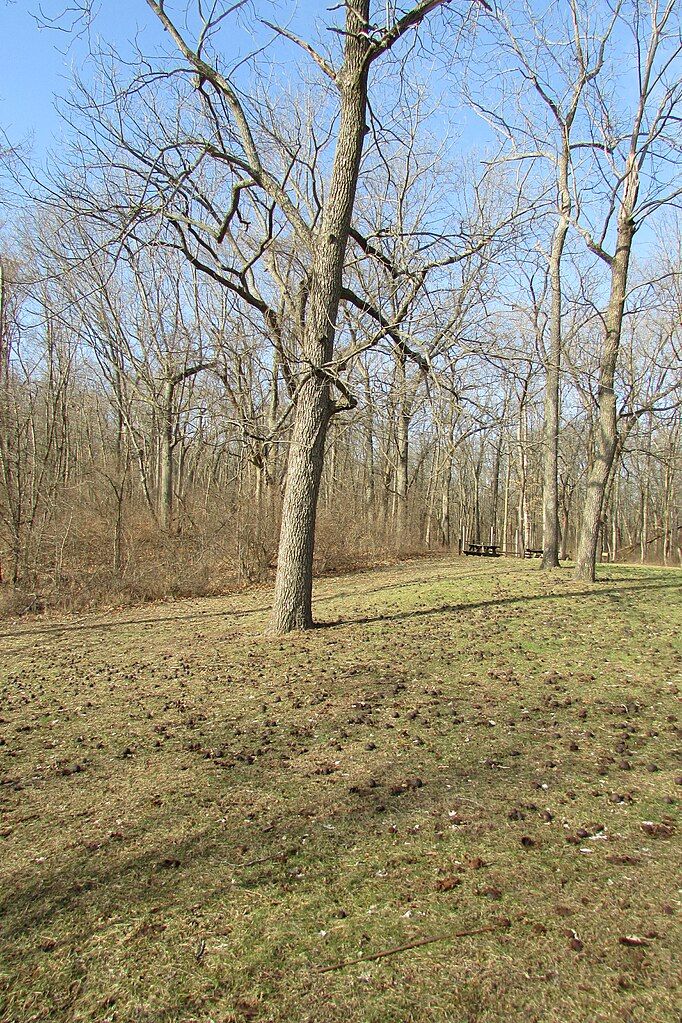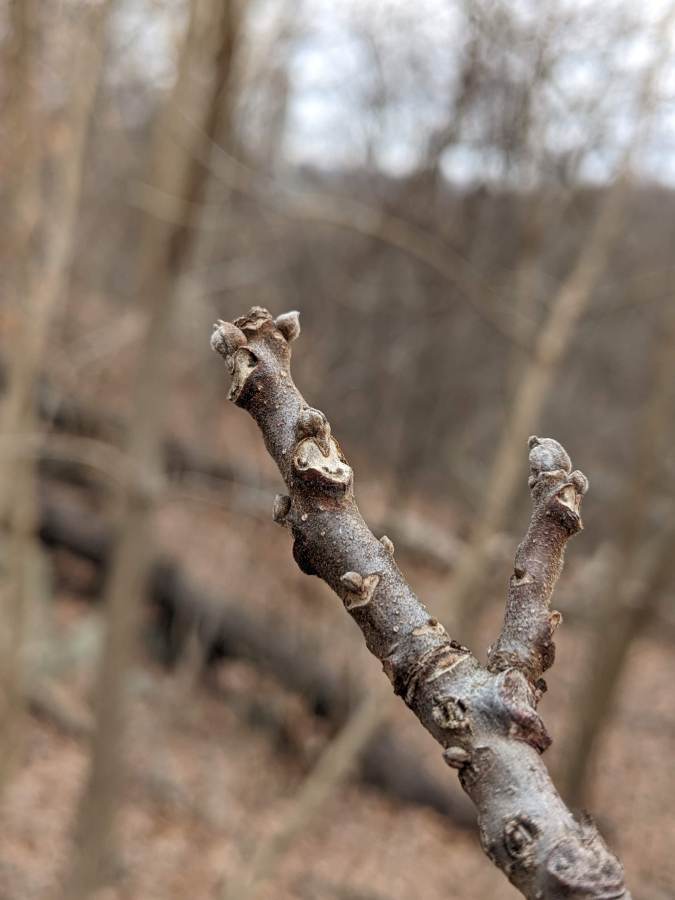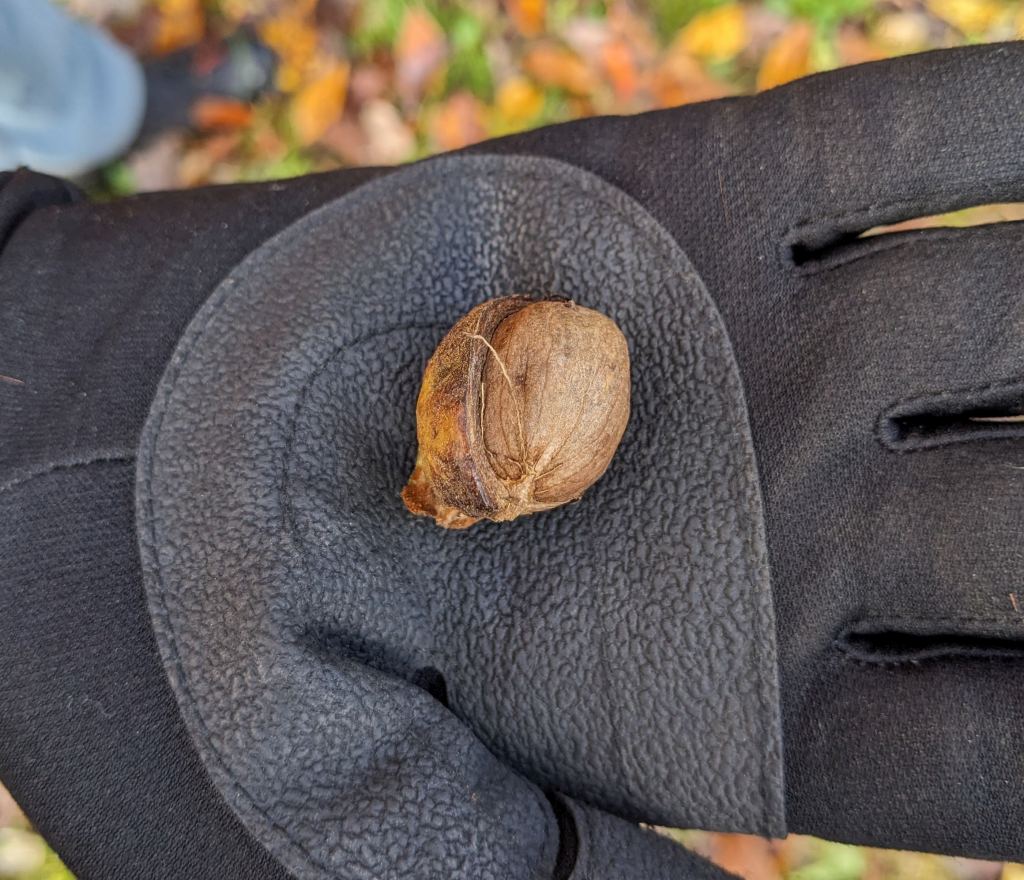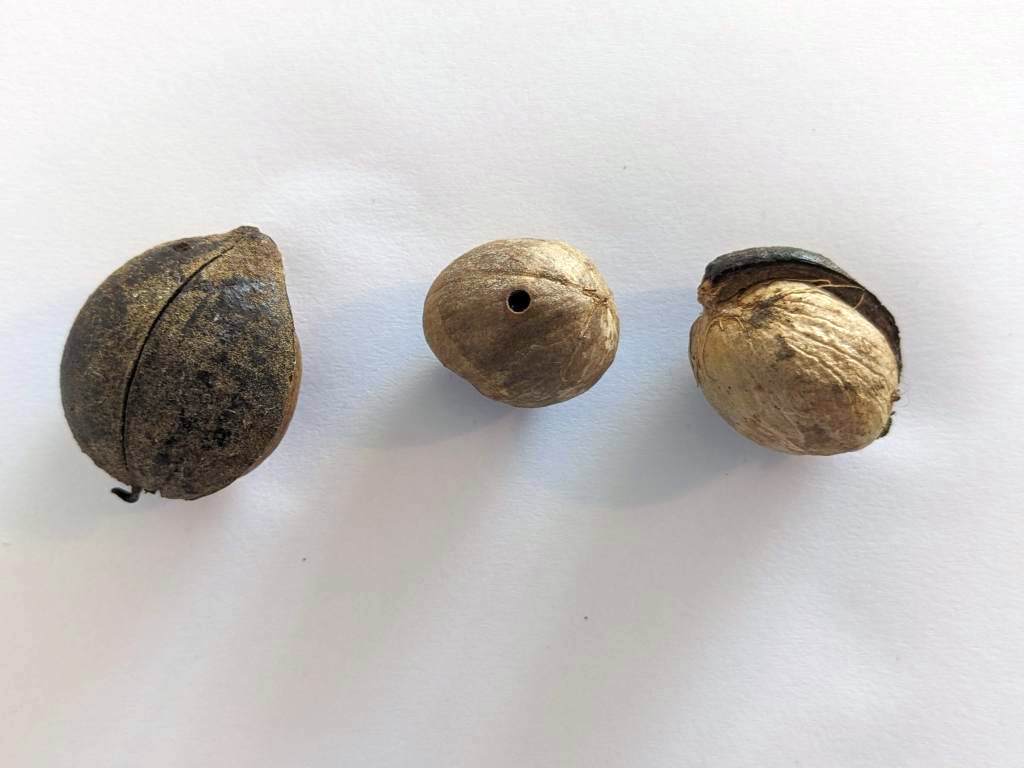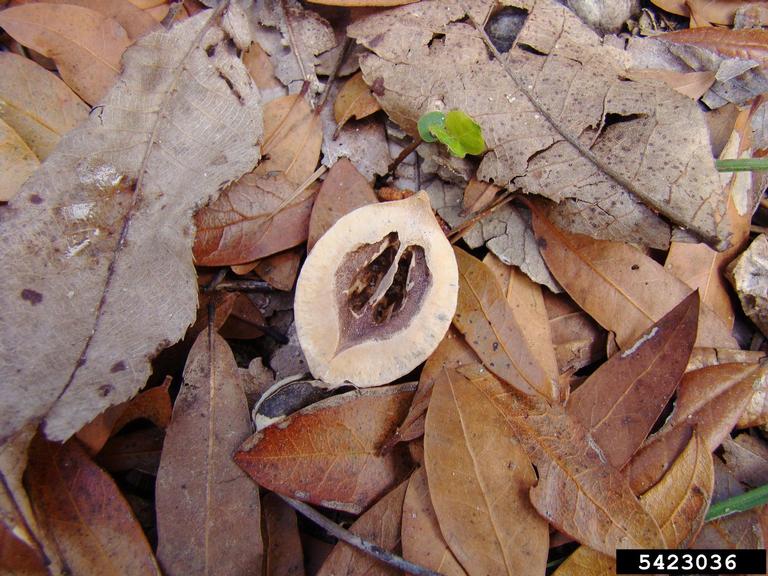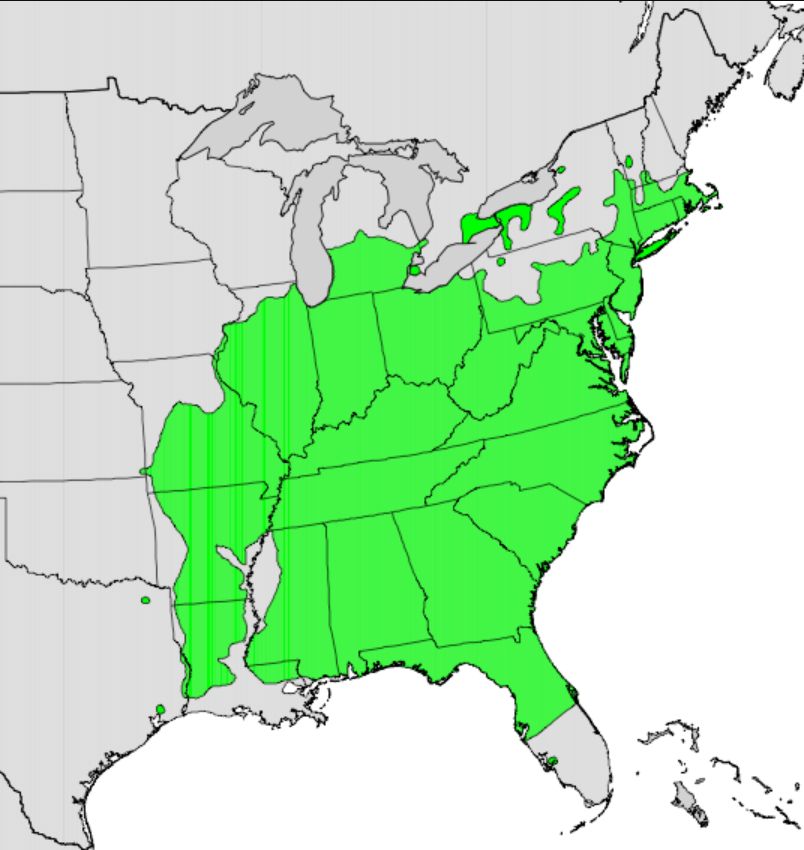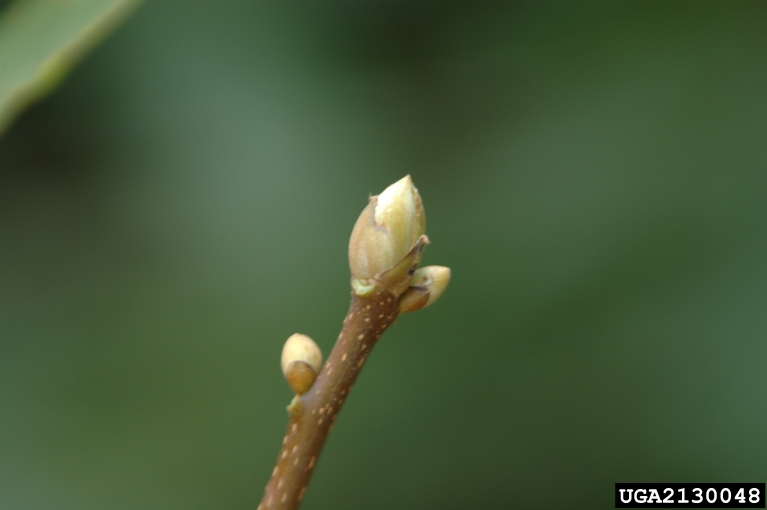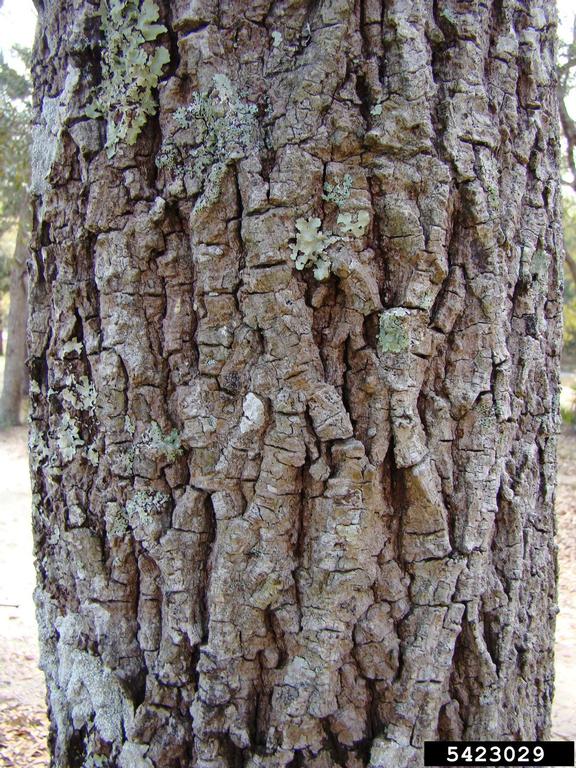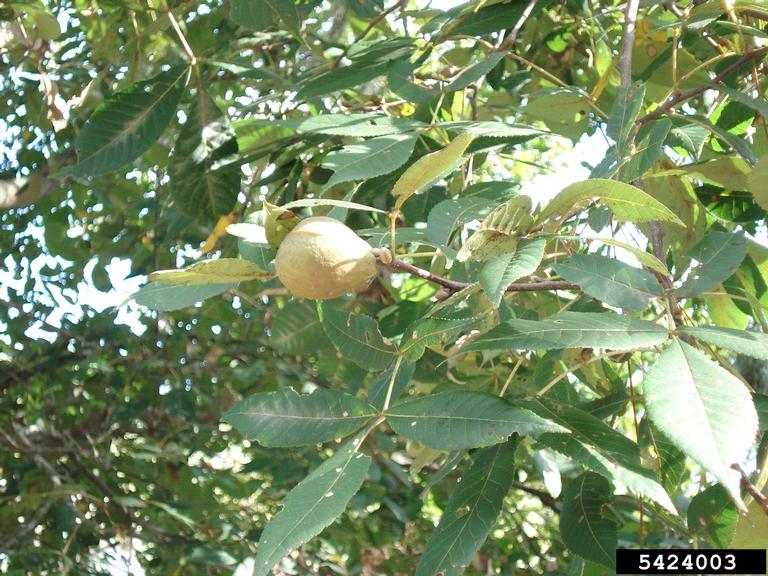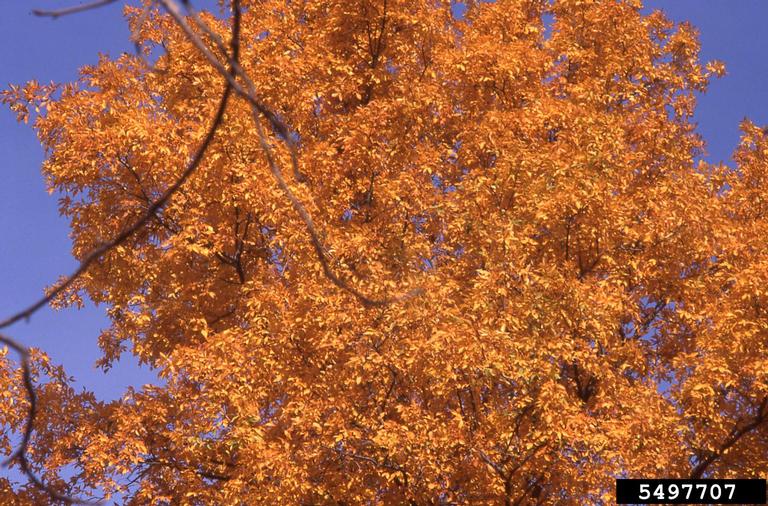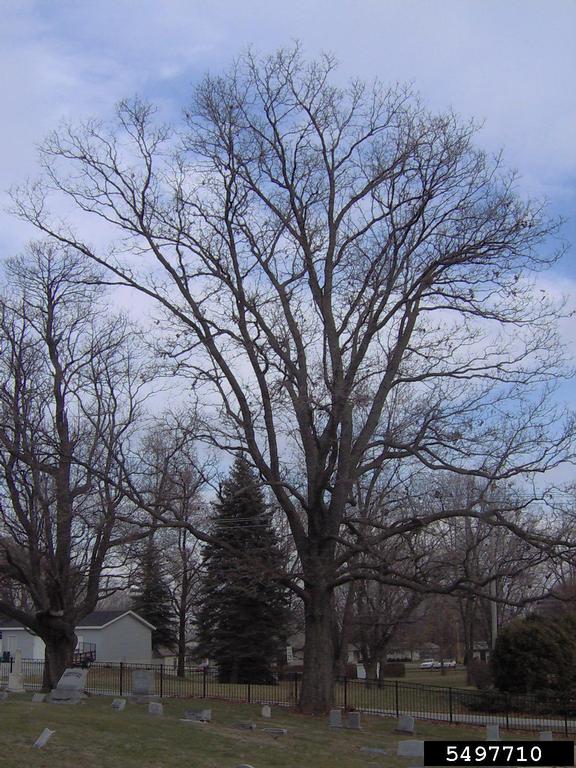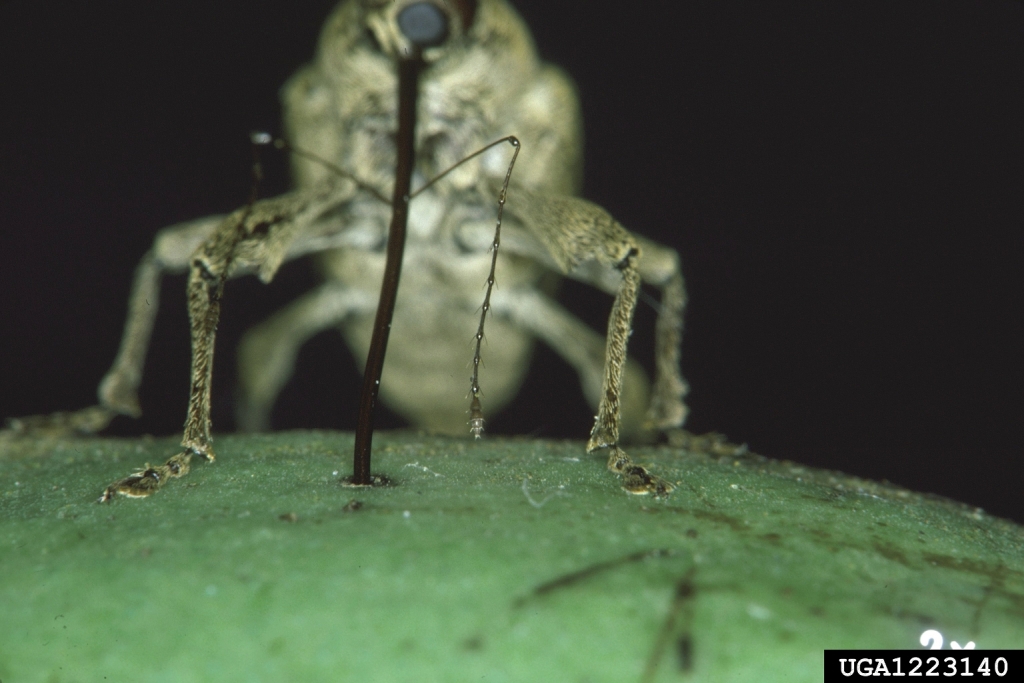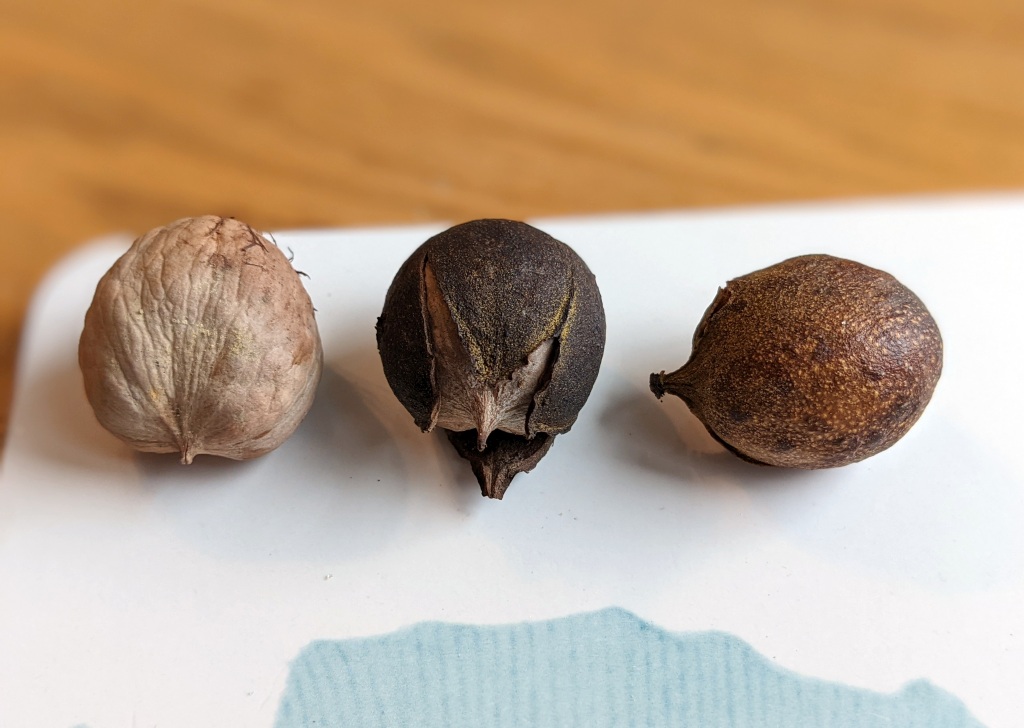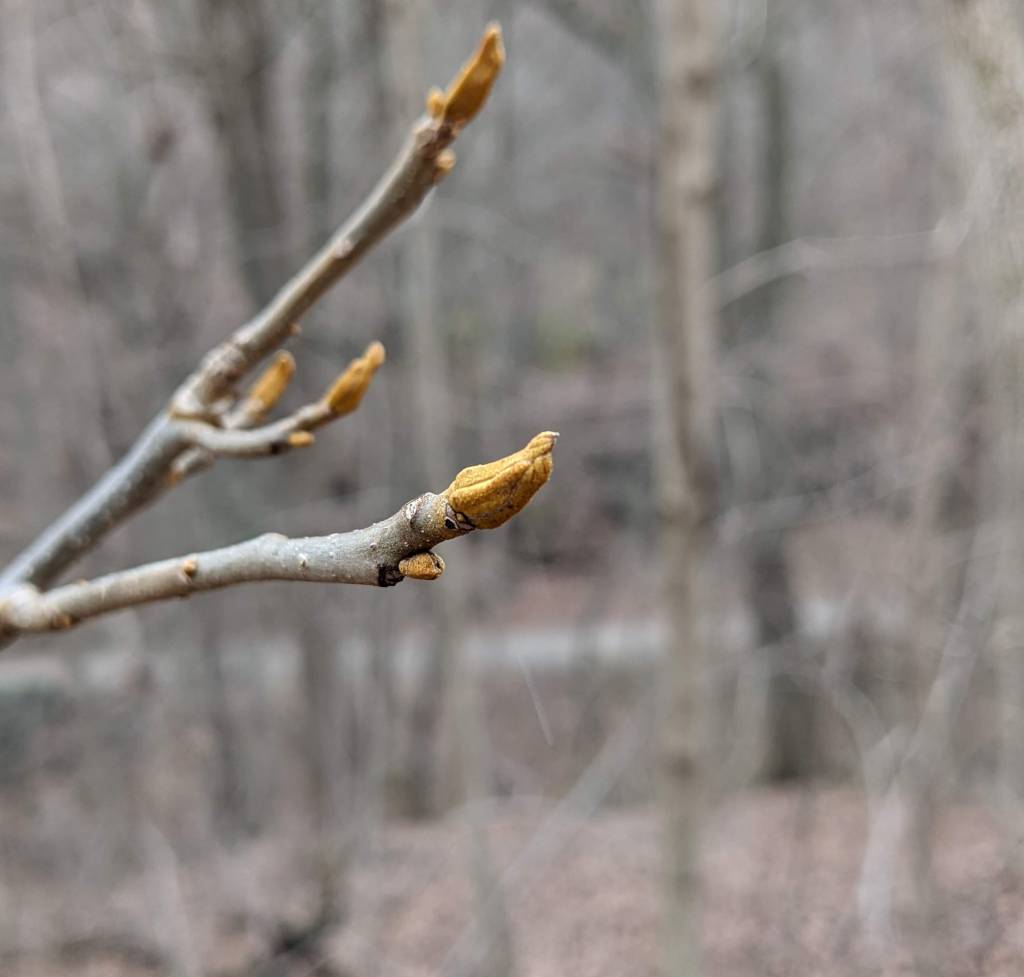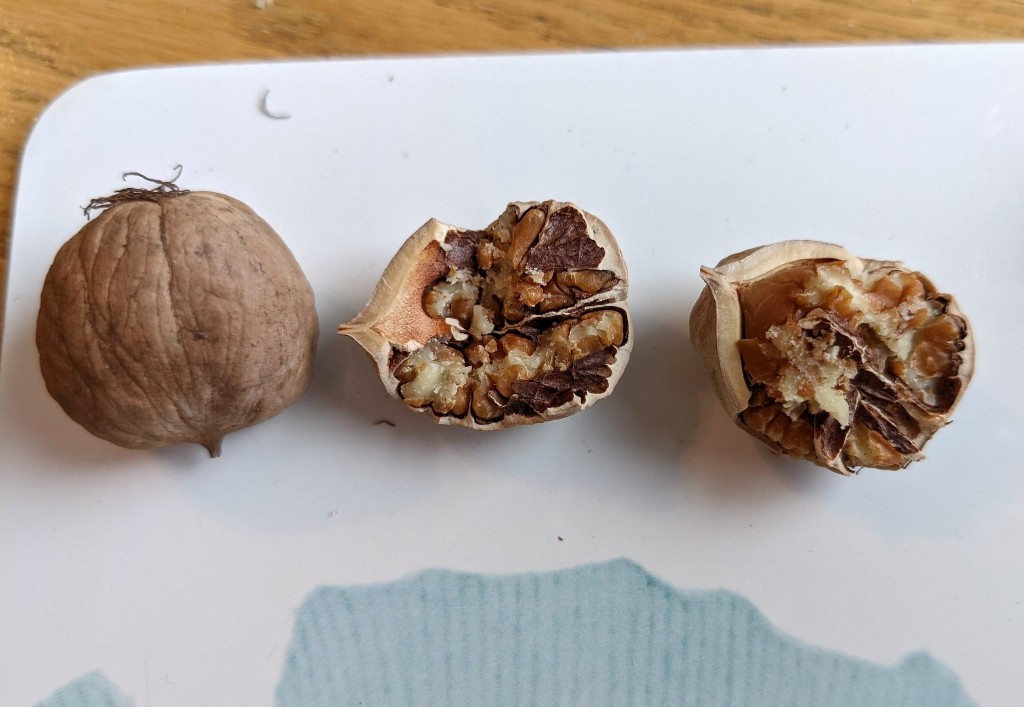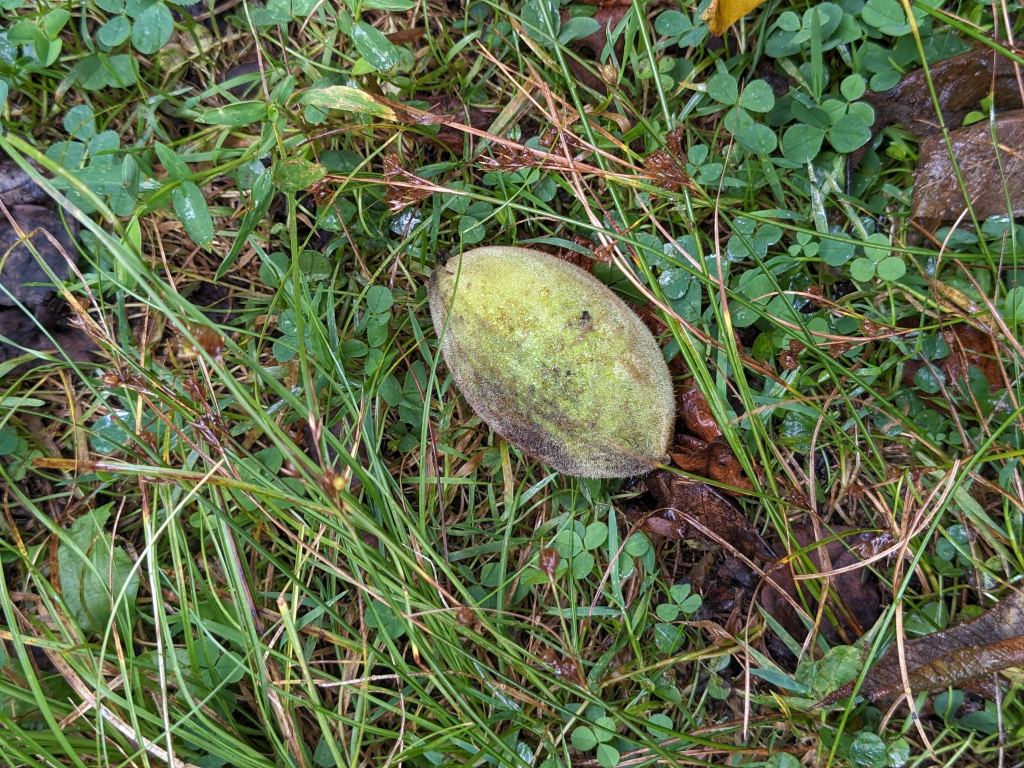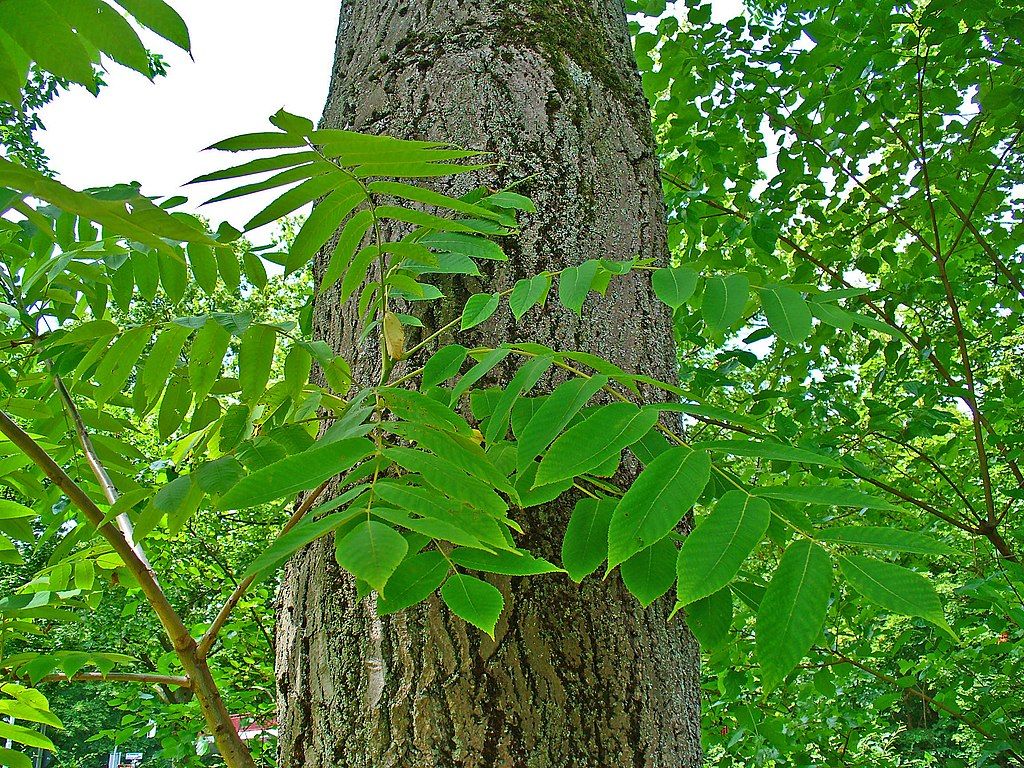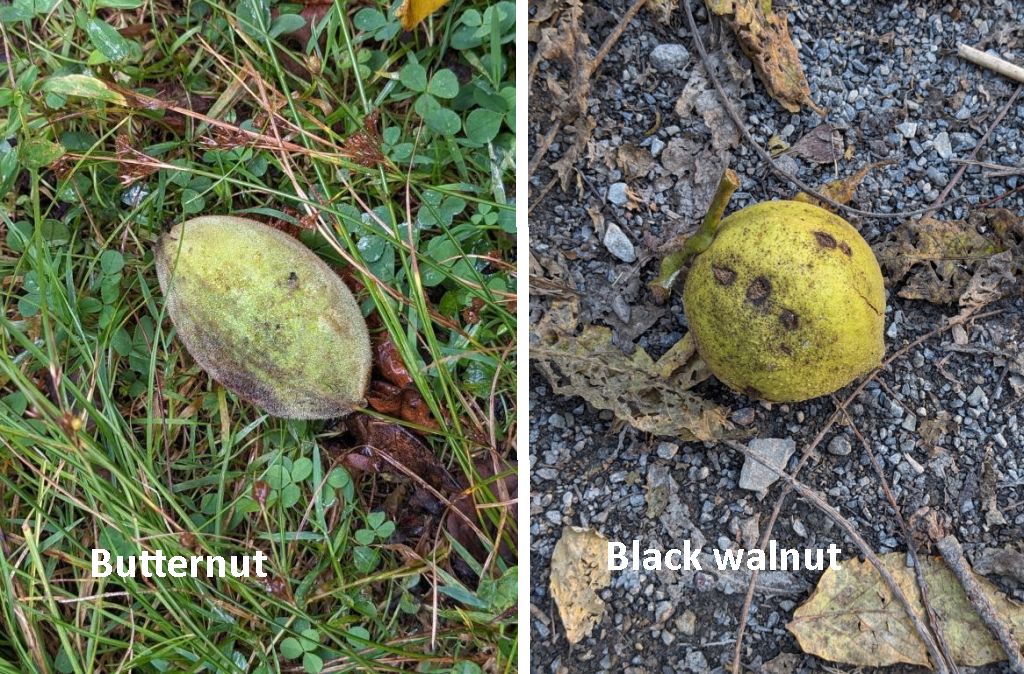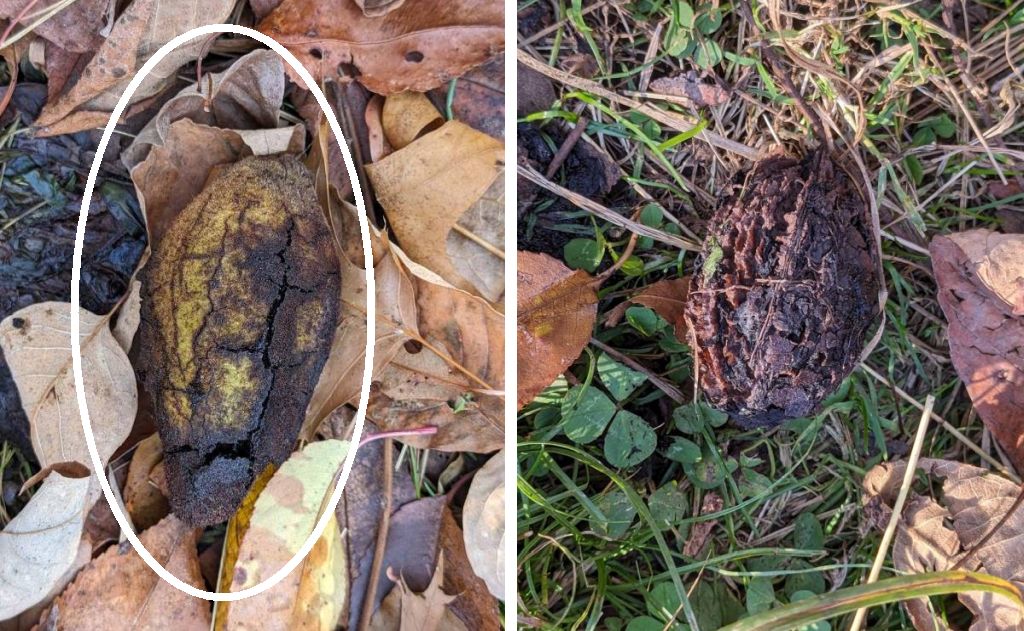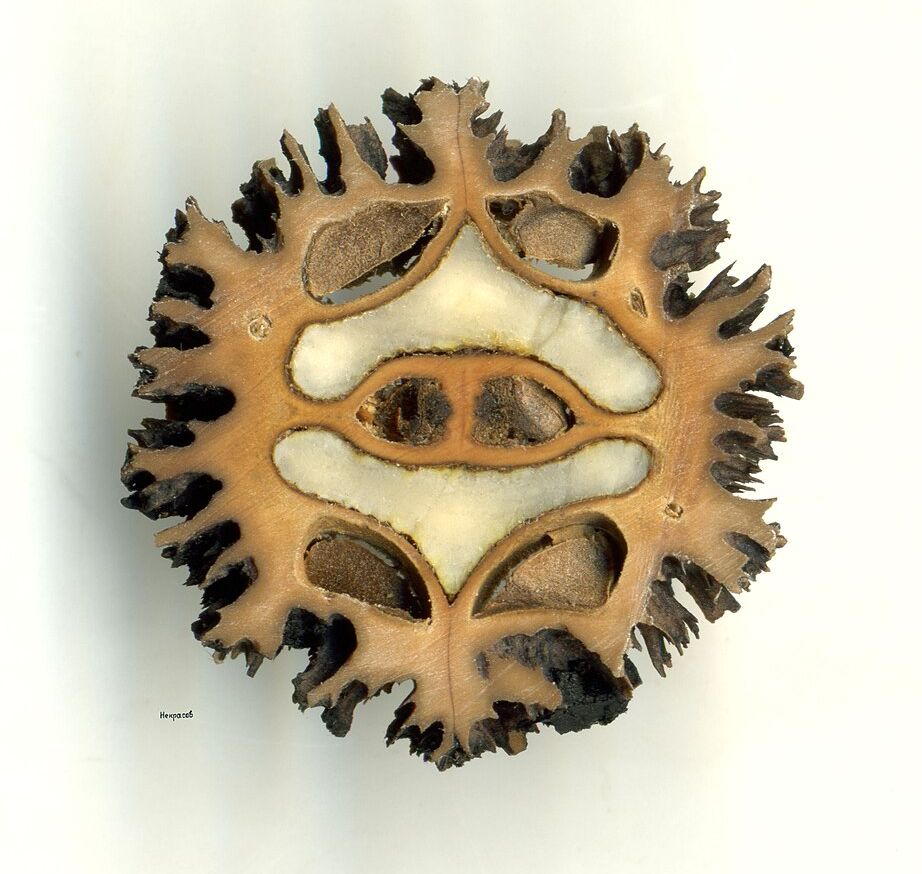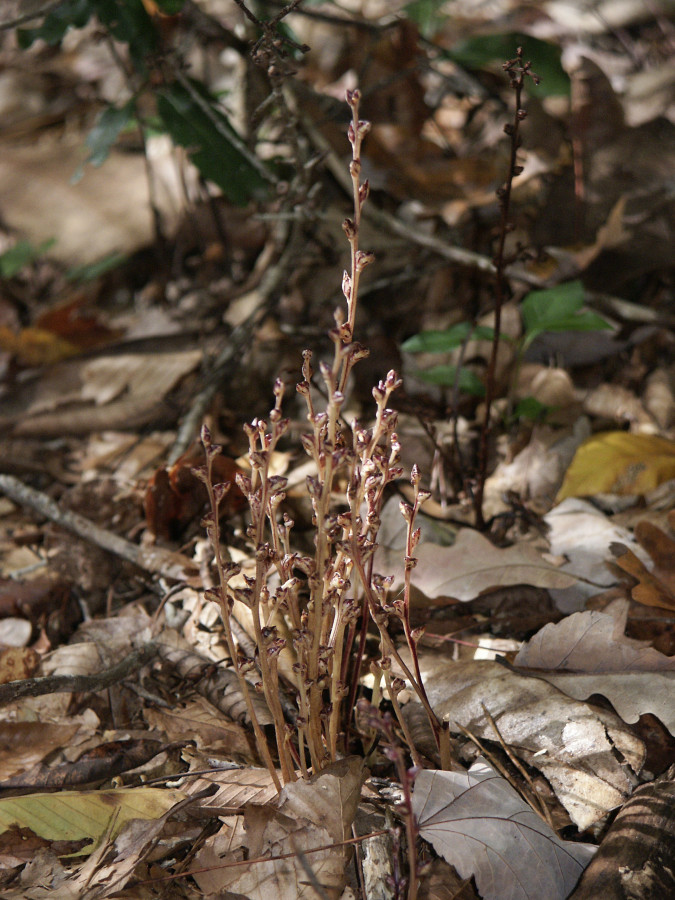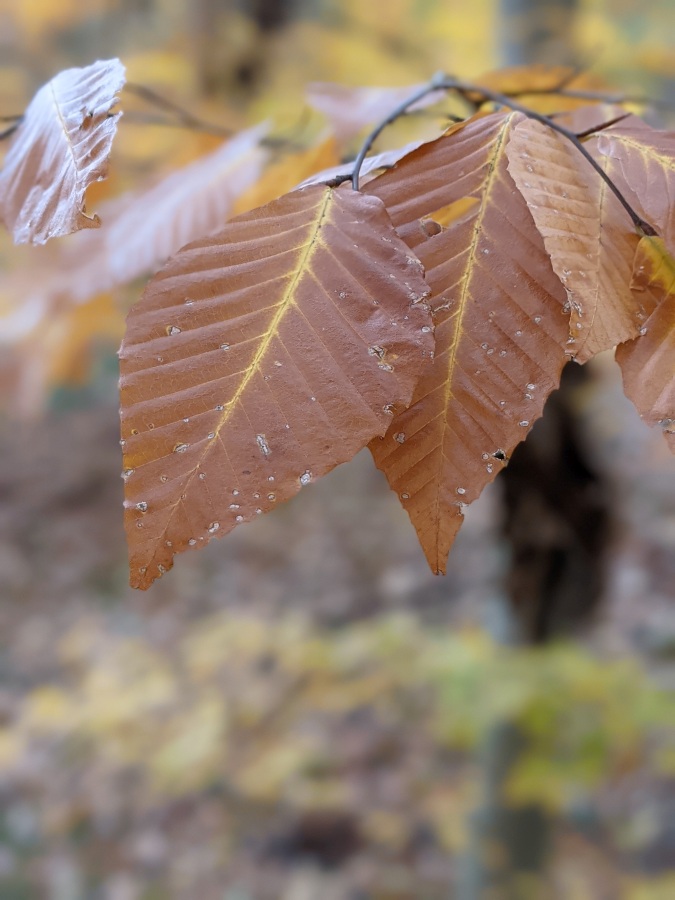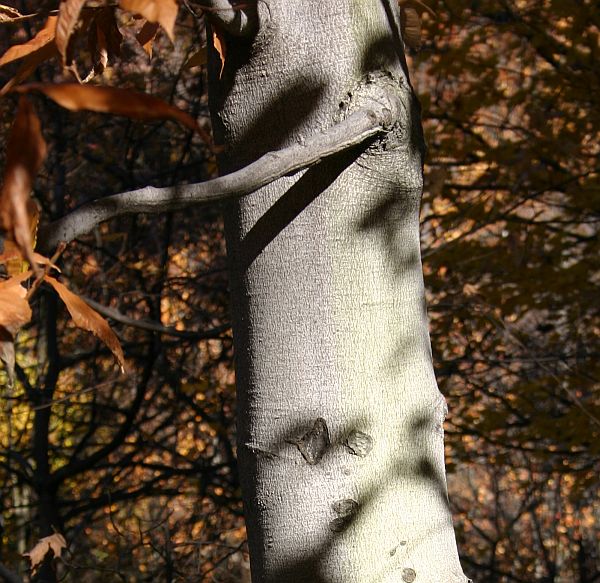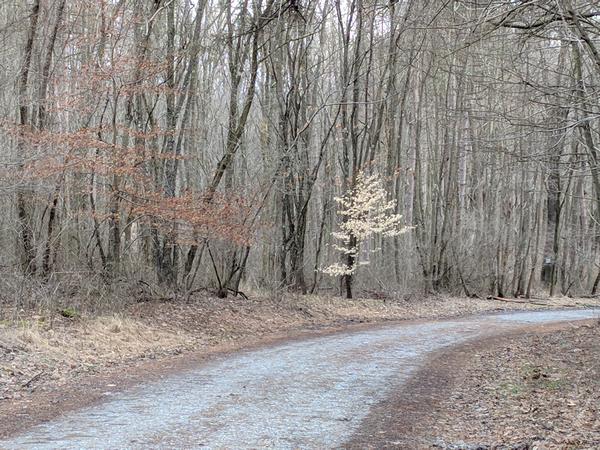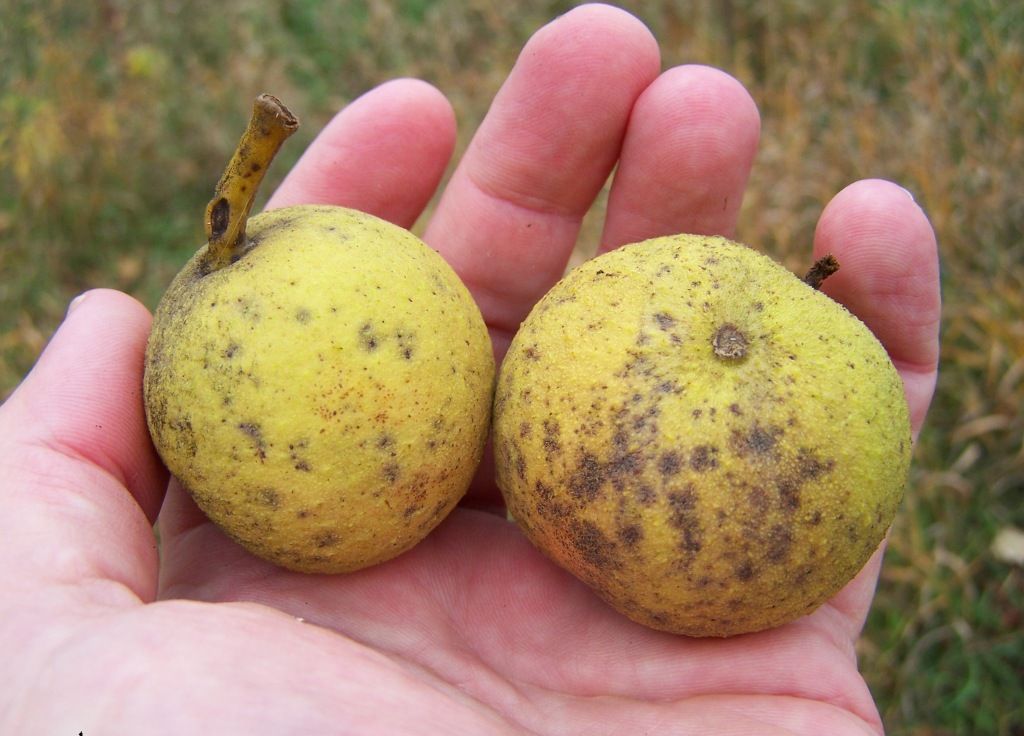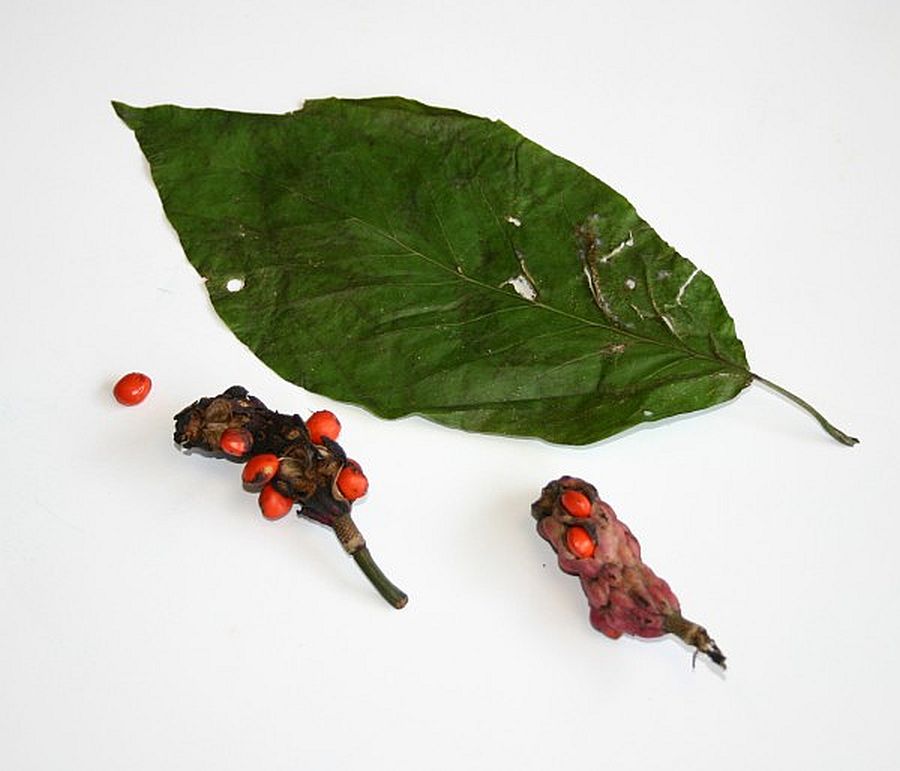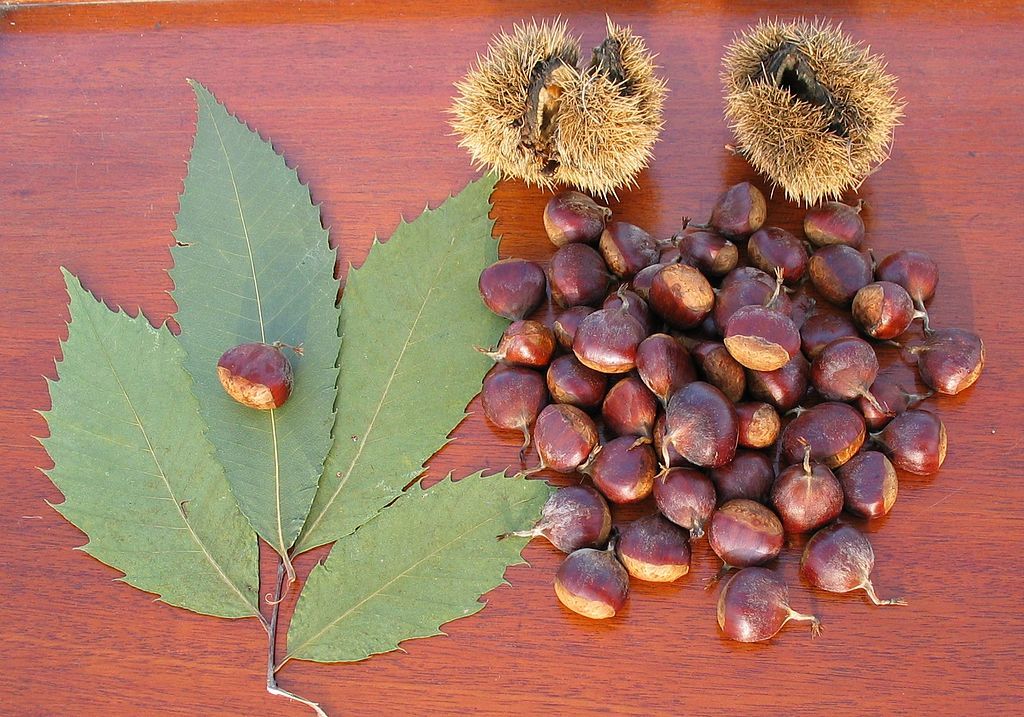
20 December 2023
The Nutty Series: American chestnut
‘Chestnuts roasting on an open fire / Jack Frost nipping at your nose / Yuletide carols being sung by a choir / And folks dressed up like Eskimos.’
— NPR: The Story Behind the Christmas Song
Despite the popularity of The Christmas Song, you’ll never find nuts of the American chestnut in the wild. By the time The Christmas Song was written in 1945 mature American chestnuts were nearly gone from North America. Today there are so few surviving mature trees that Wikipedia lists only 25 locations though people are always searching.
American chestnuts (Castanea dentata) used to be more abundant than oaks within their native range.
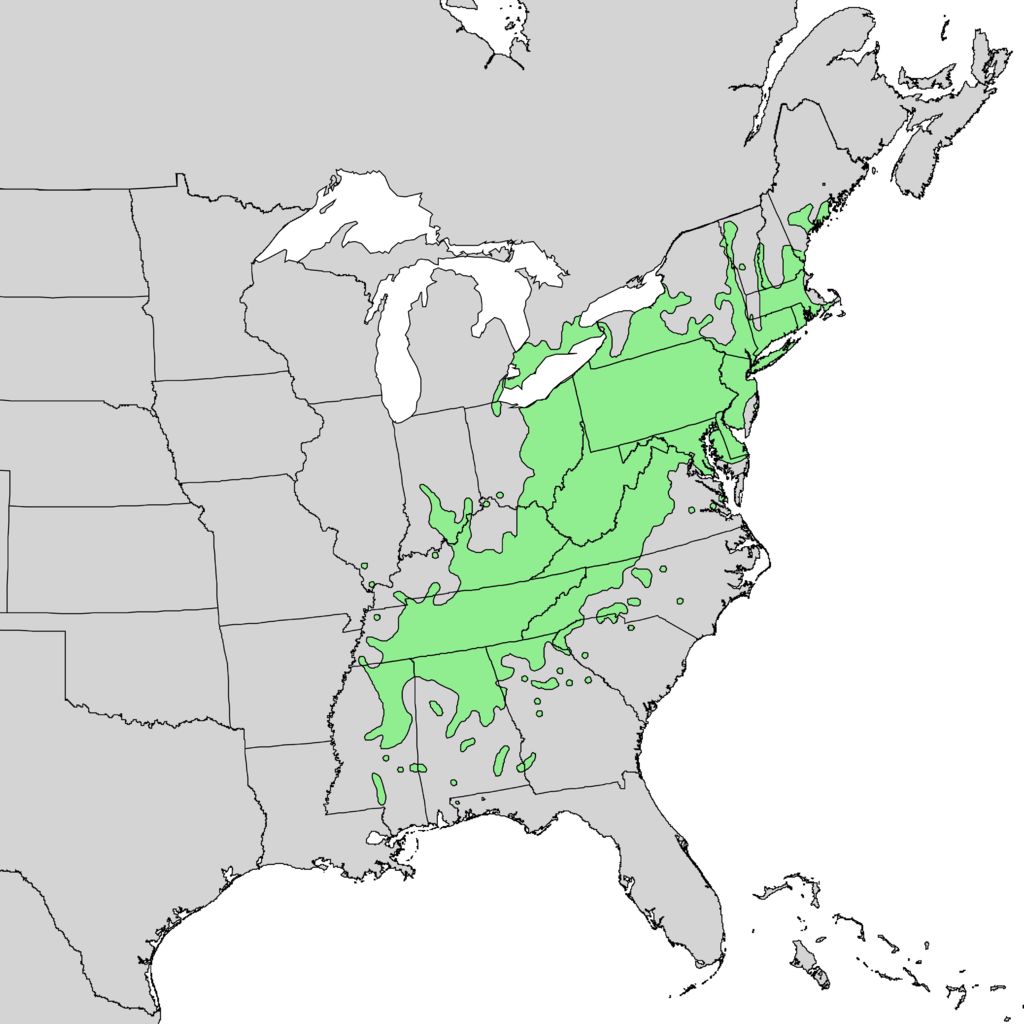
Then in the late 1800s someone imported Japanese chestnut trees that had chestnut blight. Asian chestnuts are immune, American trees are not. First noticed at the Bronx Zoo in 1904, chestnut blight spread quickly and nothing could stop it. By 1950 mature American chestnut trees were gone throughout their range.
Chestnut blight is caused by a fungus that kills the above-ground portion of the tree by getting under the bark and girdling the trunk.
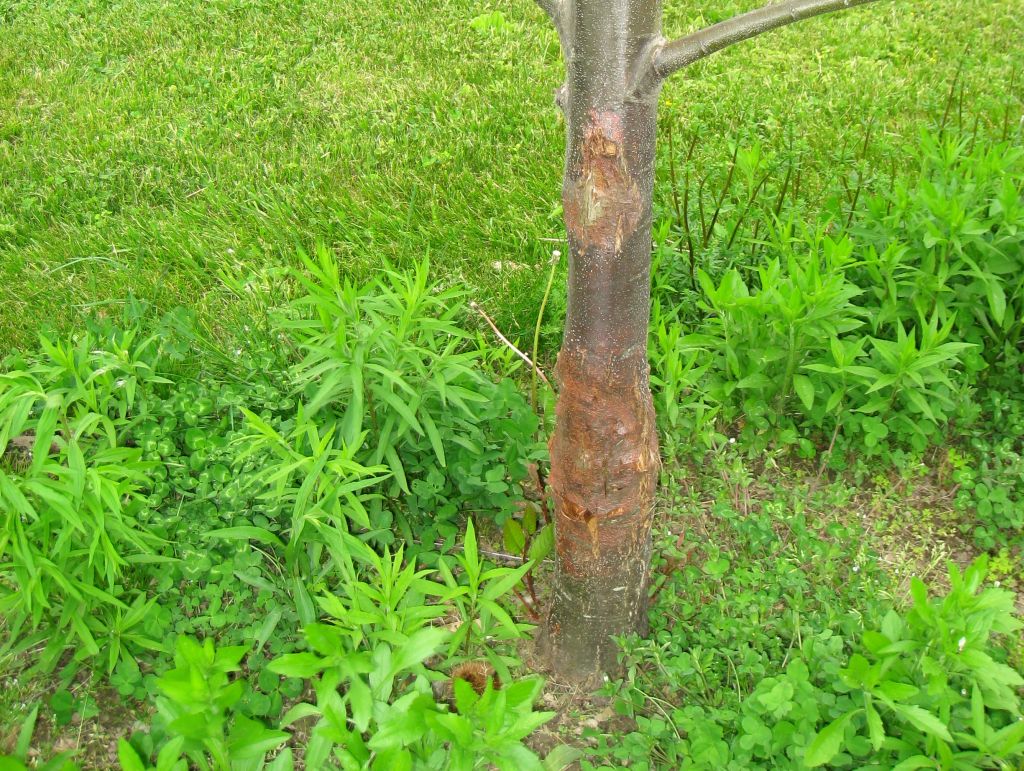
The stump lives and sends up seedlings though they die as saplings. The process repeats — seedlings, sapling, death. Most stumps are at least a hundred years old.
To find a chestnut in the woods I look for the leaves at knee height. The photo below shows a typical American chestnut stump with seedlings. This one has a dead sapling as well.
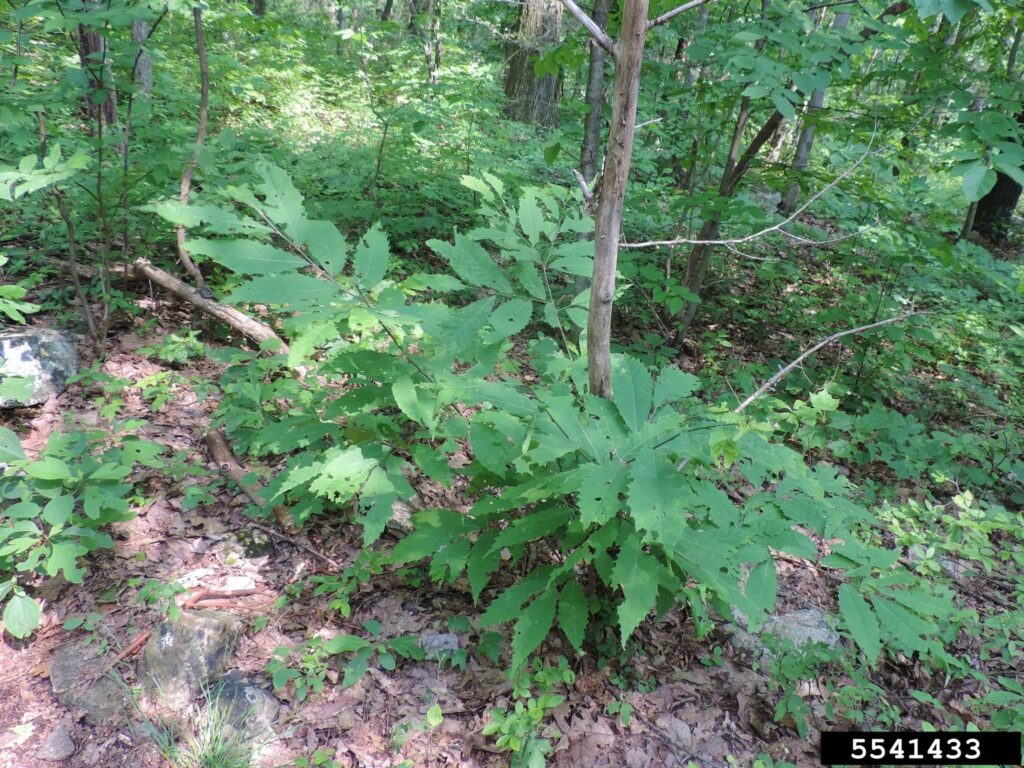
For over 70 years arborists have been searching for a cure for chestnut blight and trying to breed immune American chestnuts. They have crossed the American chestnut with Chinese chestnuts, then back-crossed the hybrid to another American chestnut. These efforts, supported by The American Chestnut Foundation among many others, take decades to realize any success.
There are several experimental orchards in Pennsylvania. All are protected from deer.
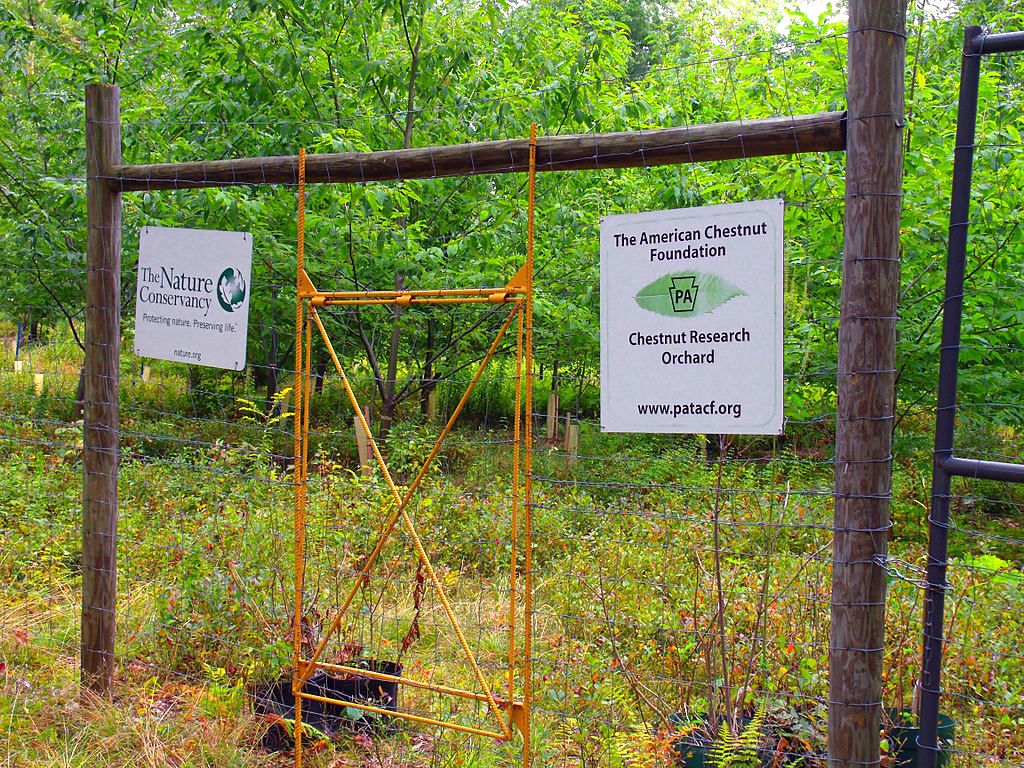
Arborists collect the nuts, not to roast but to plant, so we’ll have more chestnuts some day.
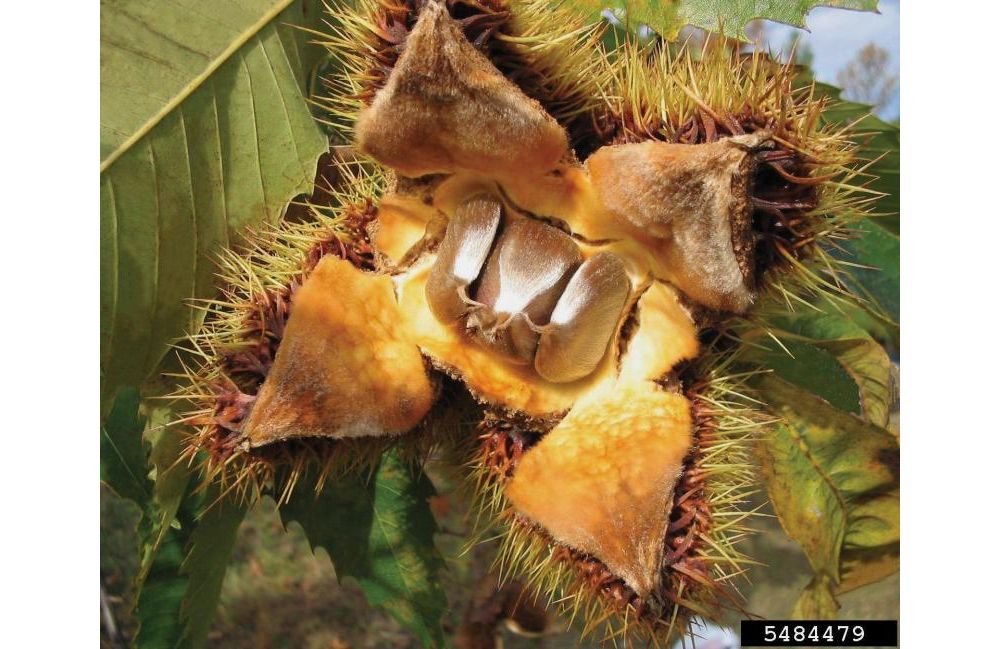
As potentially successful hybrids become available, they are planted more widely — still in protected areas — to test their immunity and build back the chestnut population.
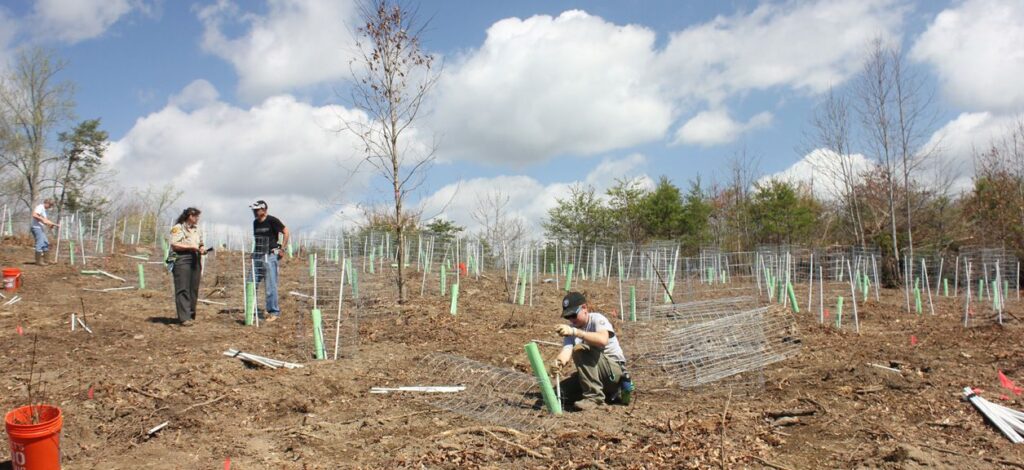
At these locations the leaves are above knee height.
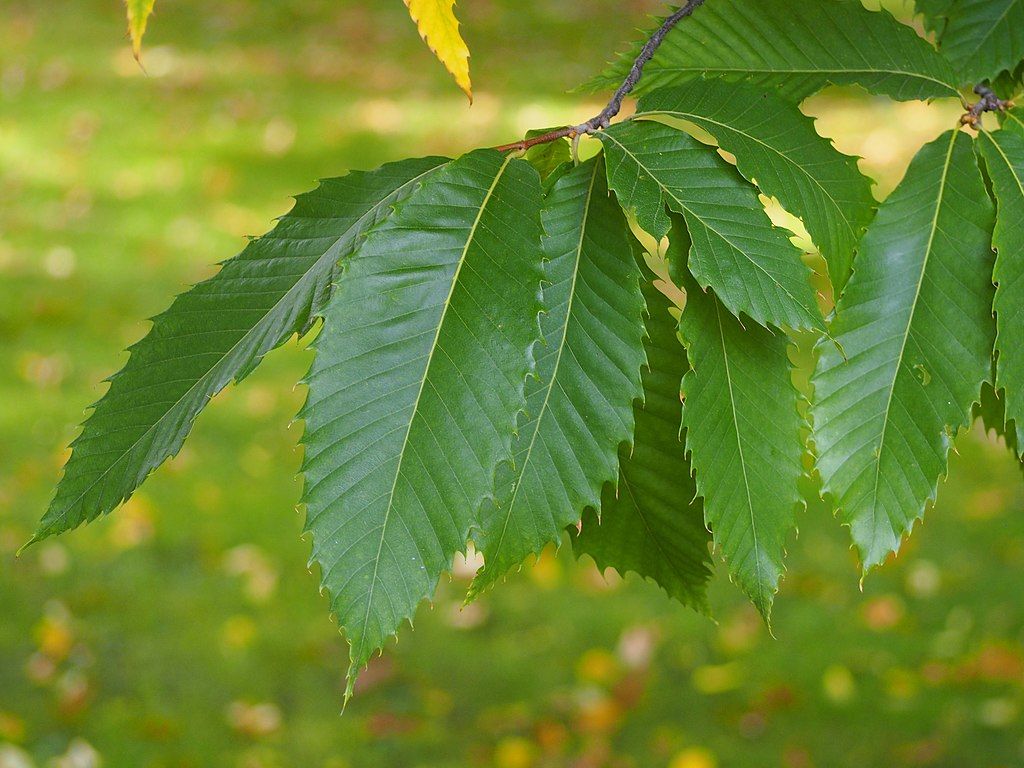
Perhaps in one to two hundred years the nuts of American chestnuts will be easy to find and we’ll appreciate the first phrase of The Christmas Song again.
(credits are in the captions)
